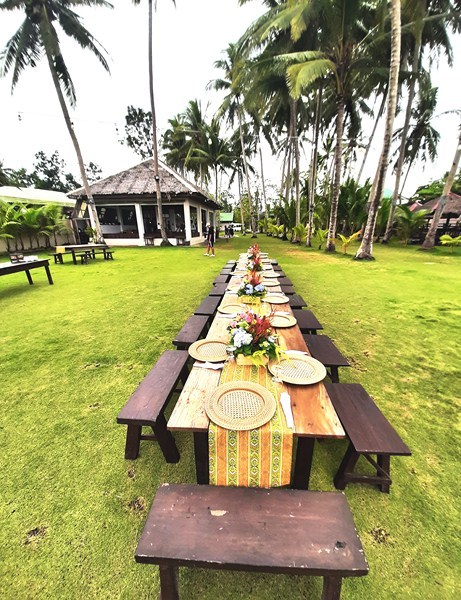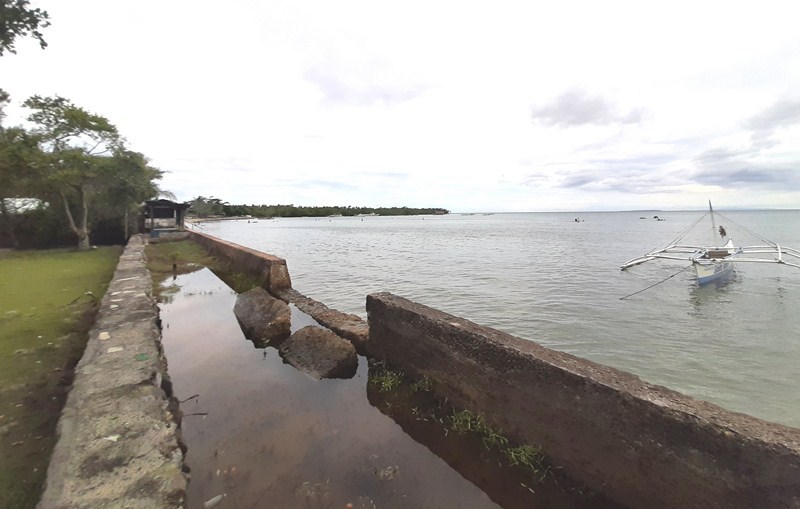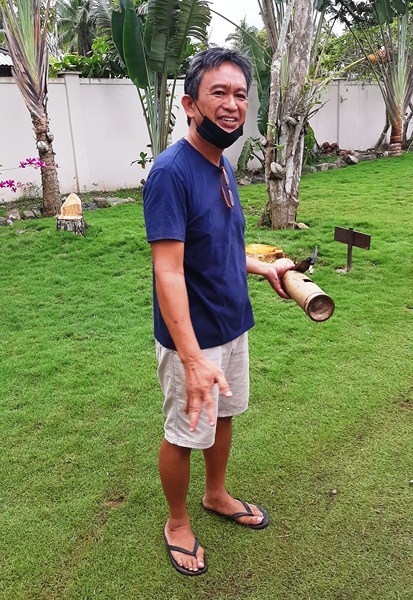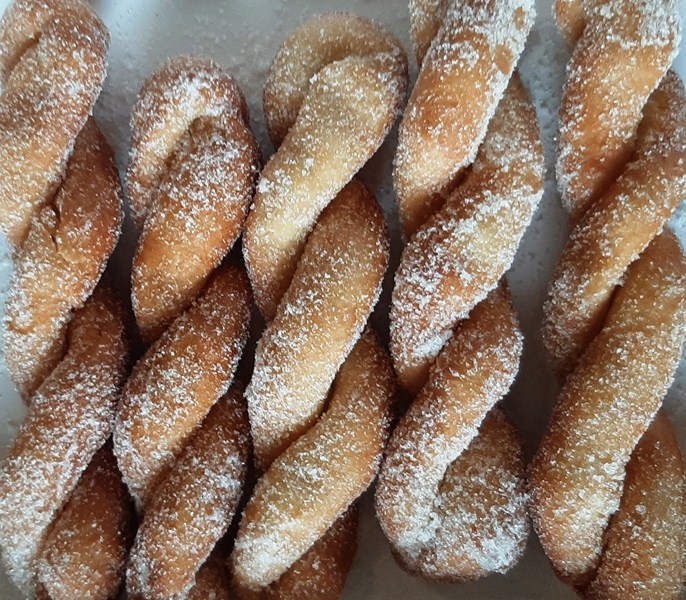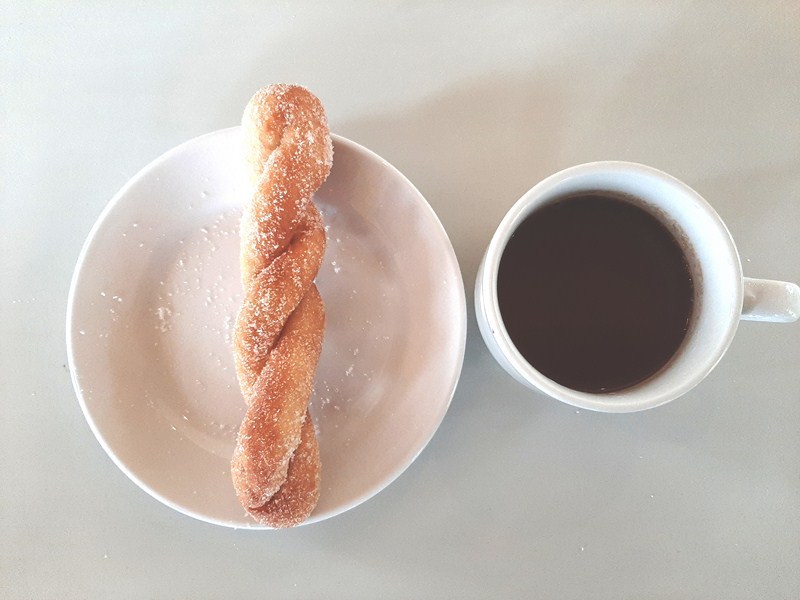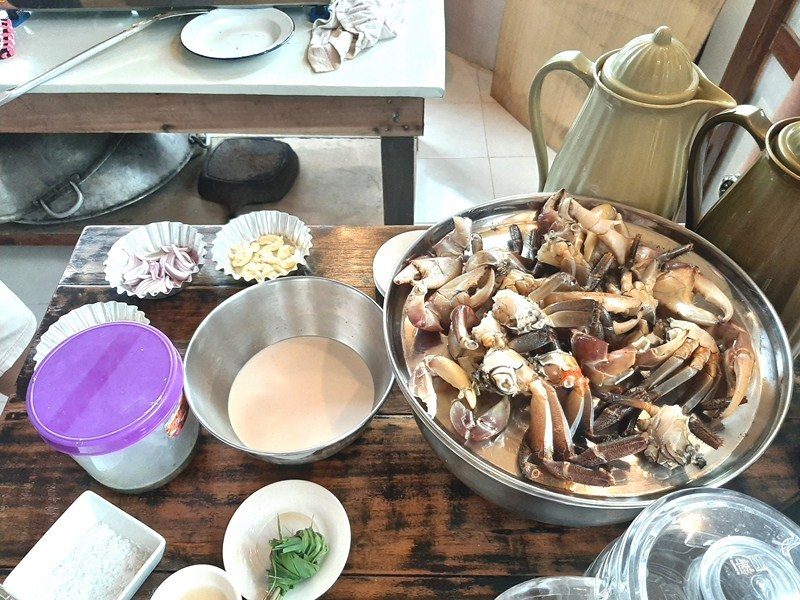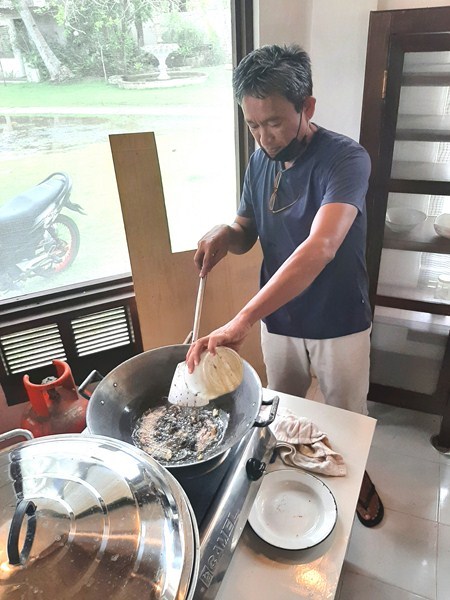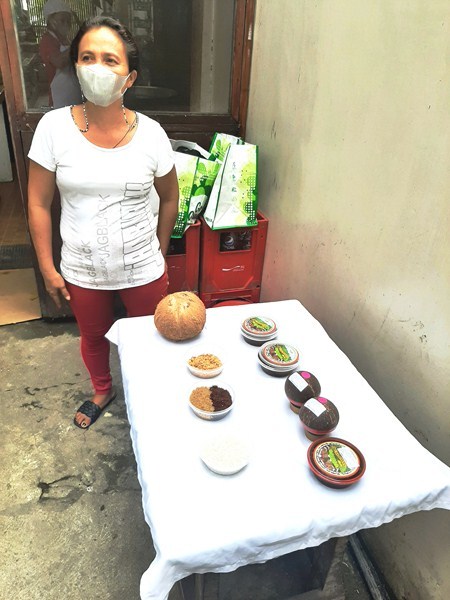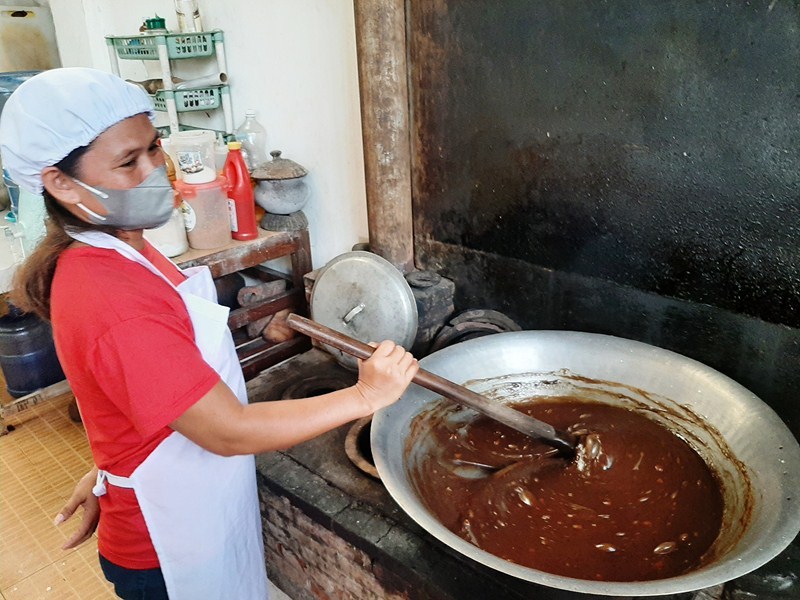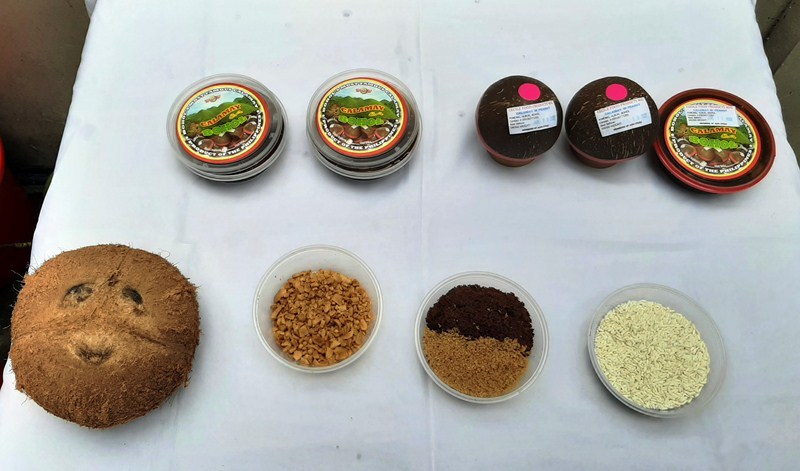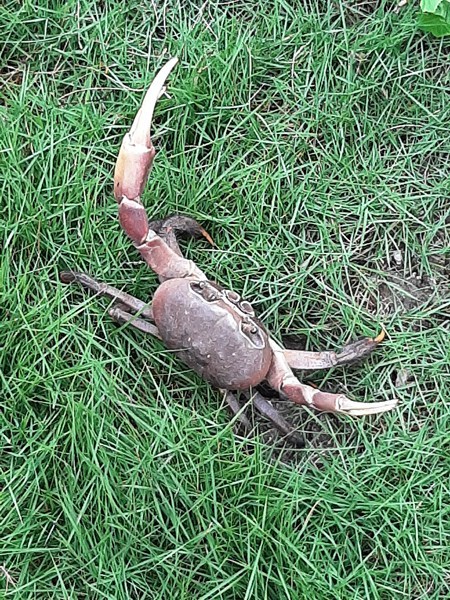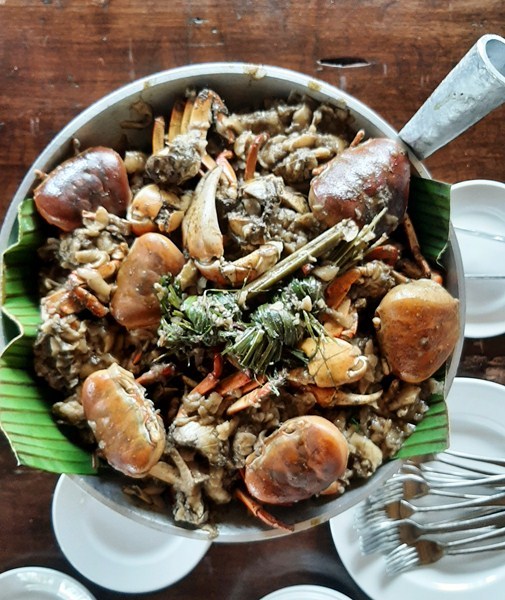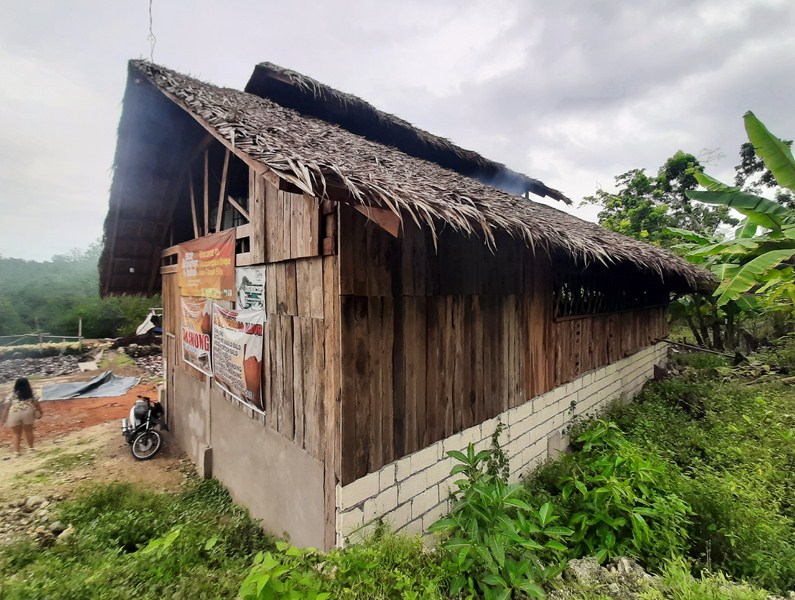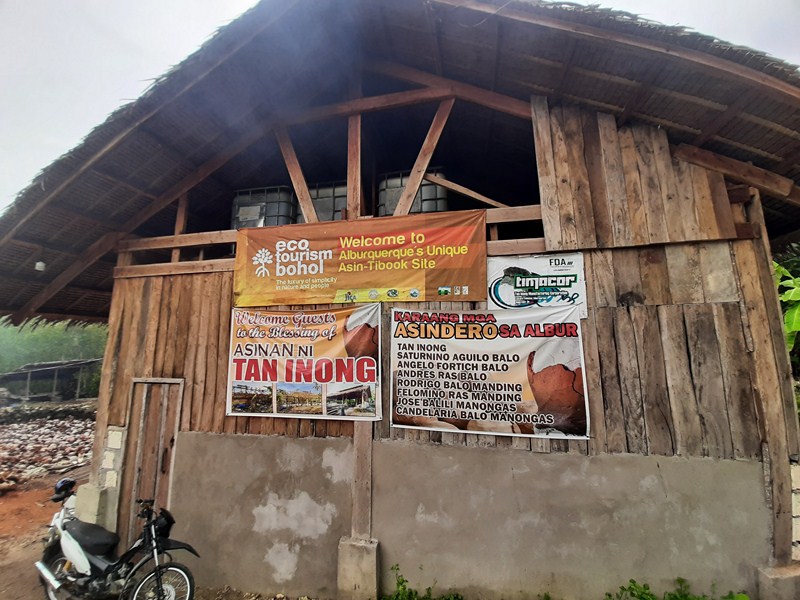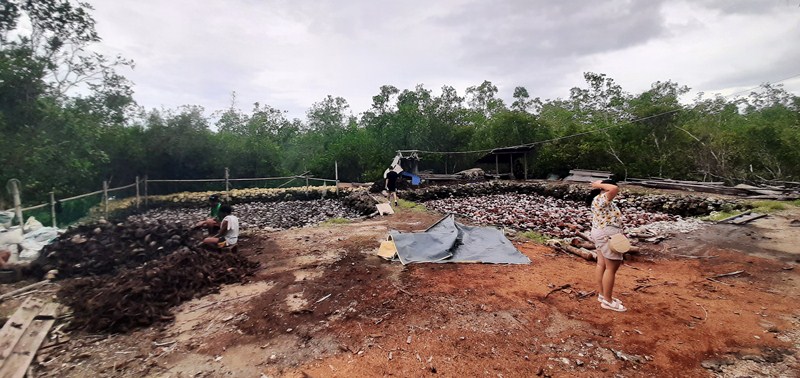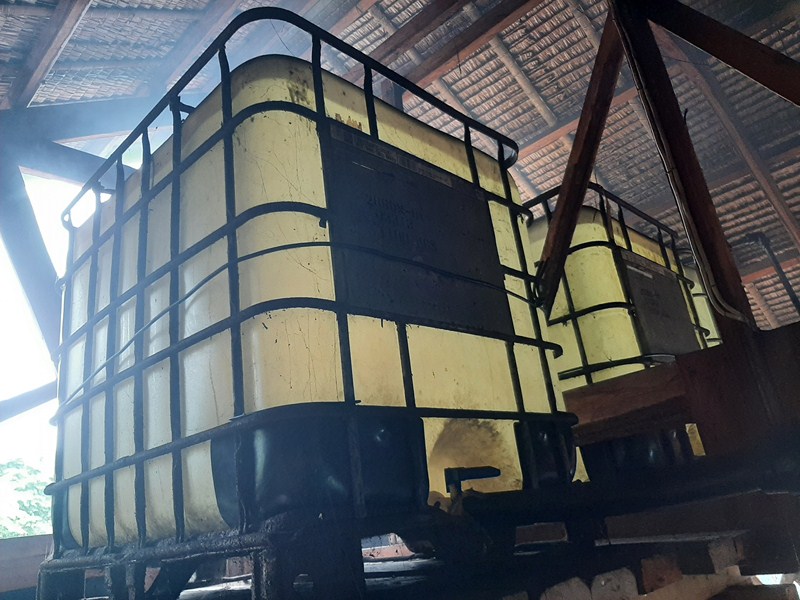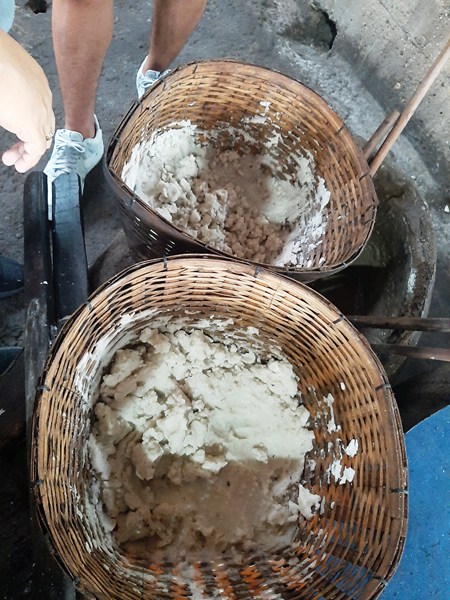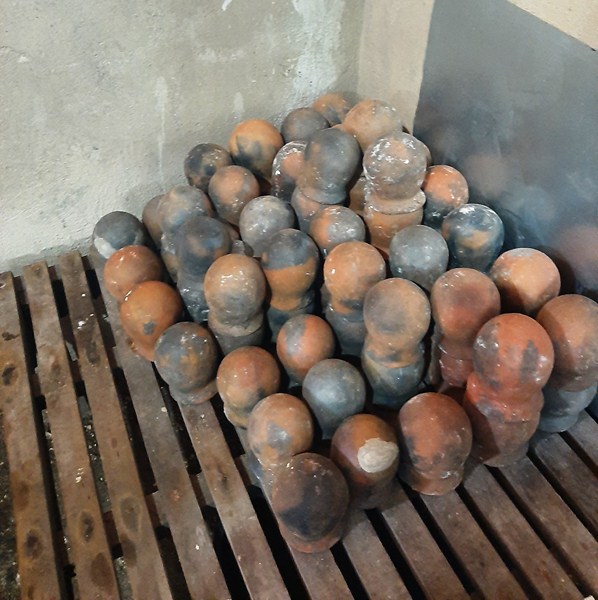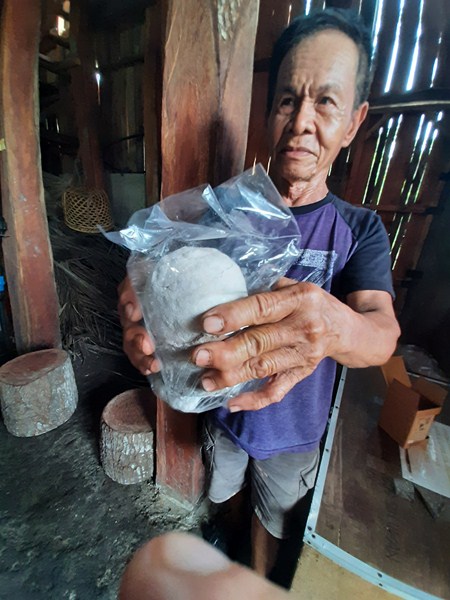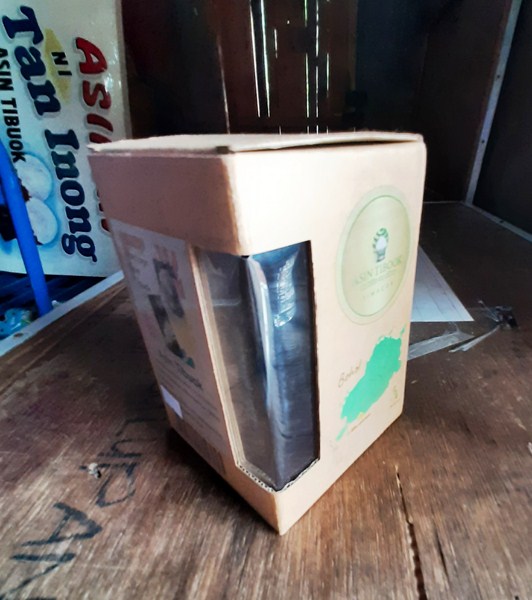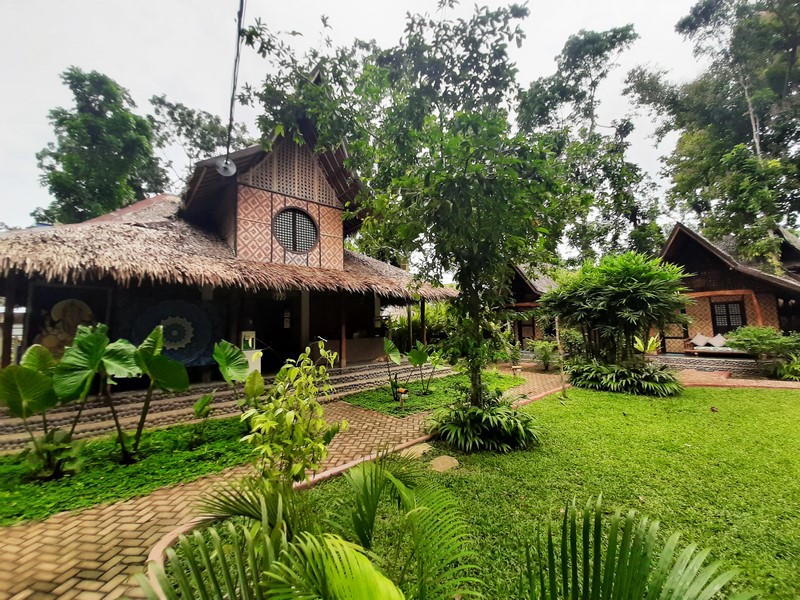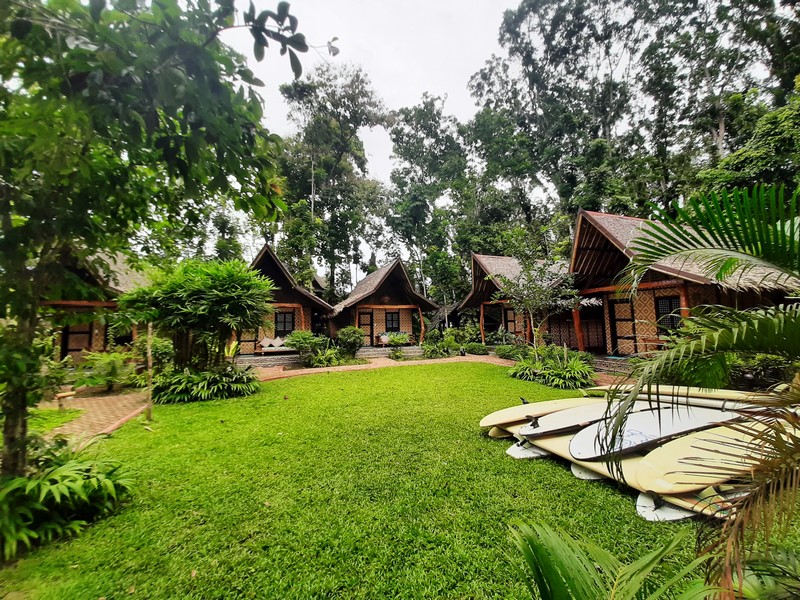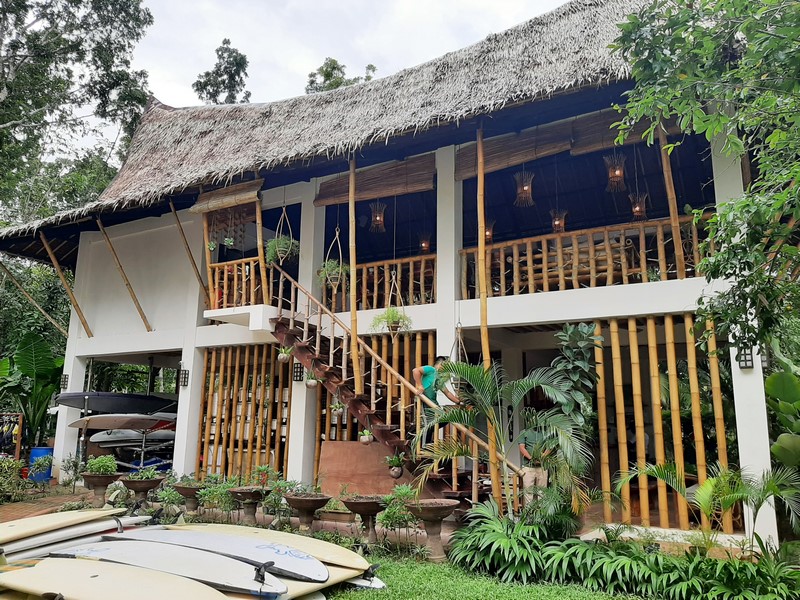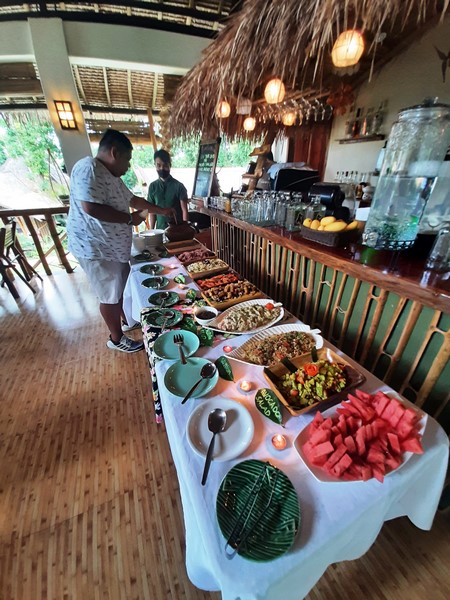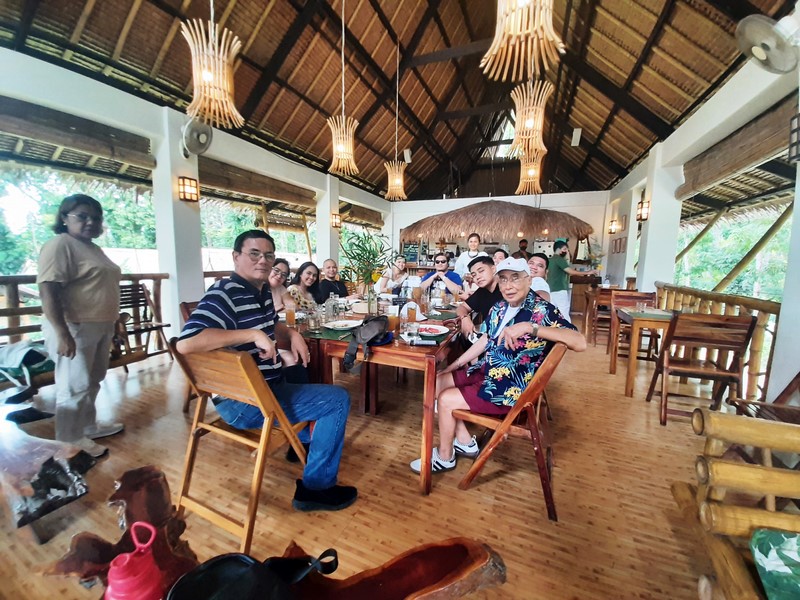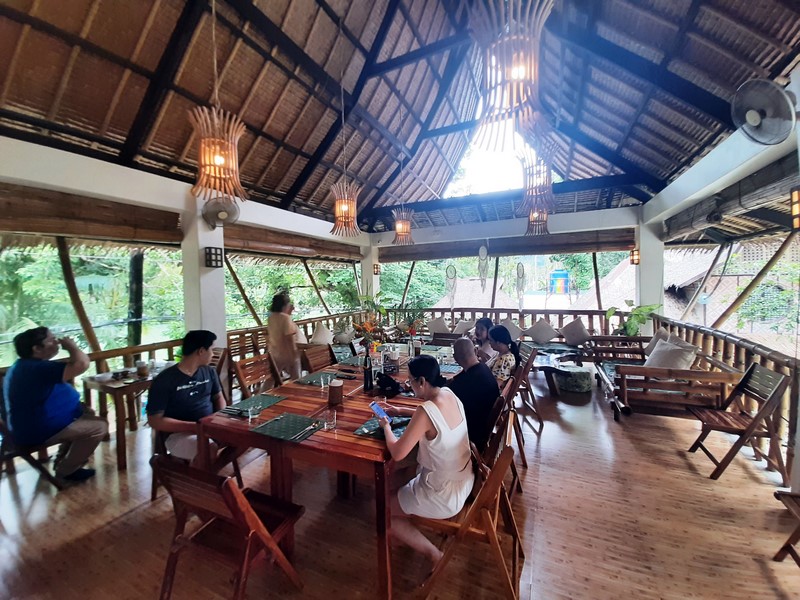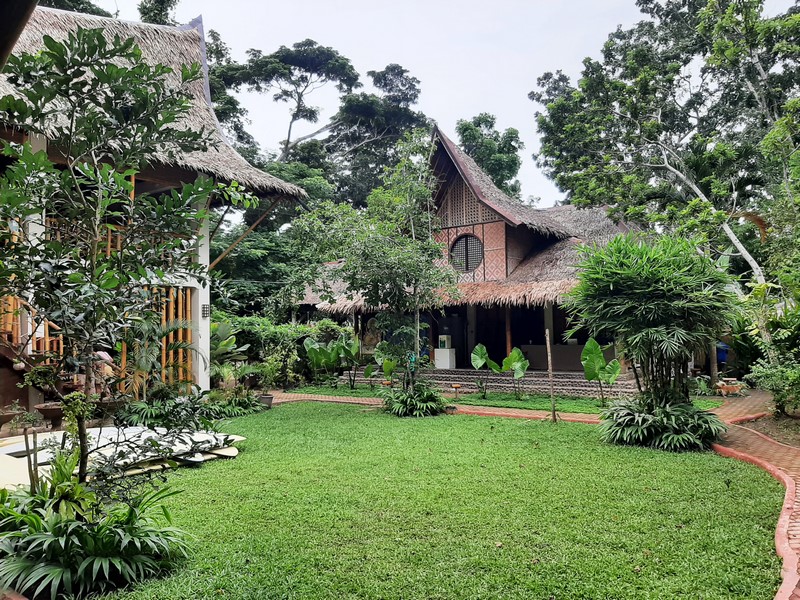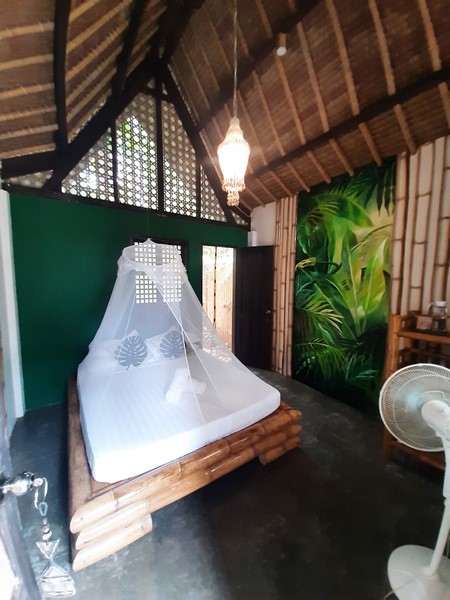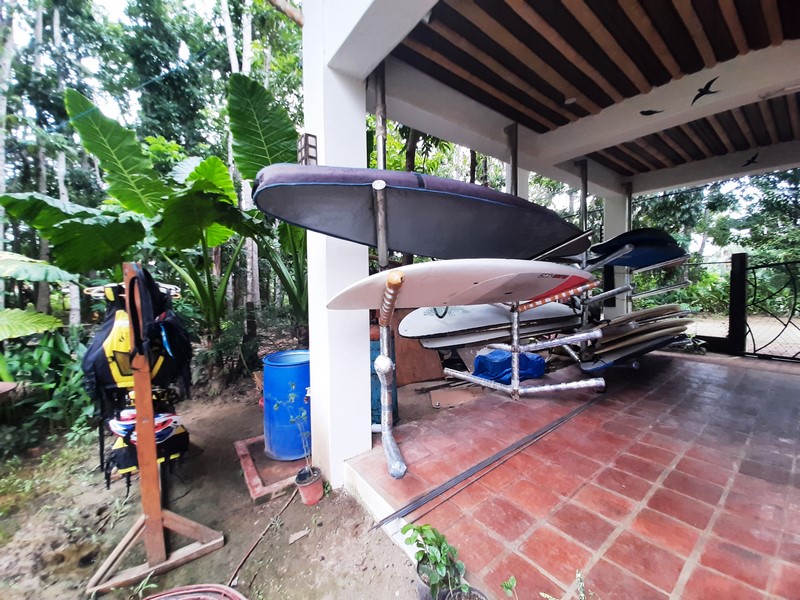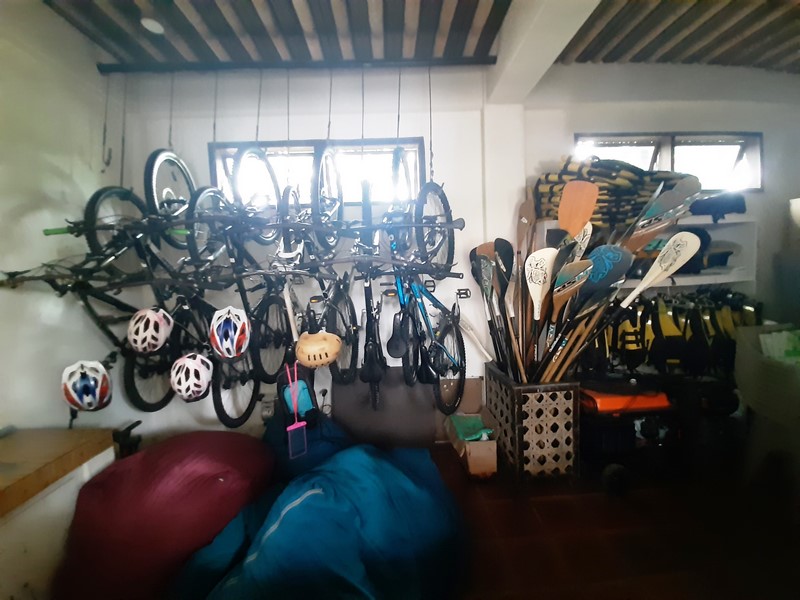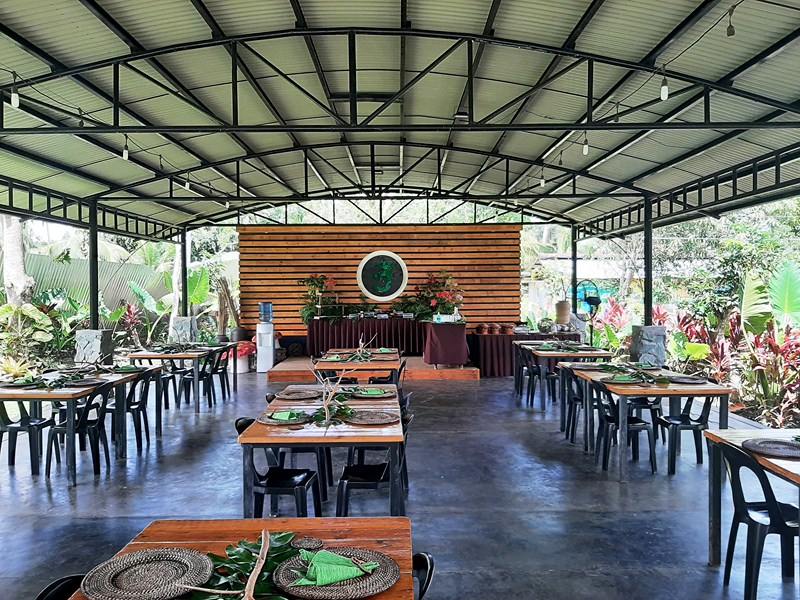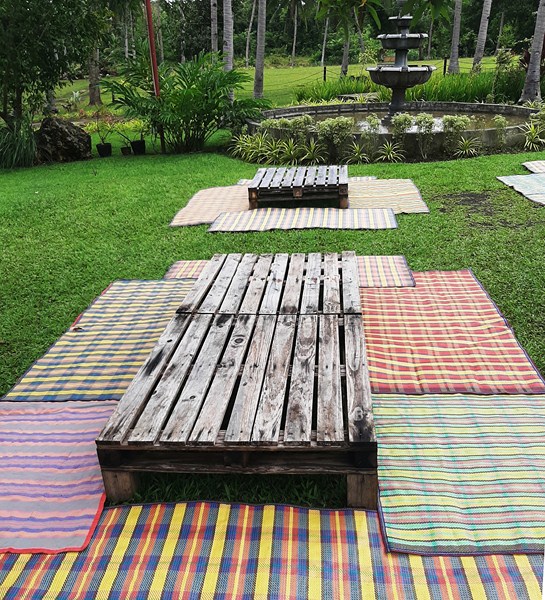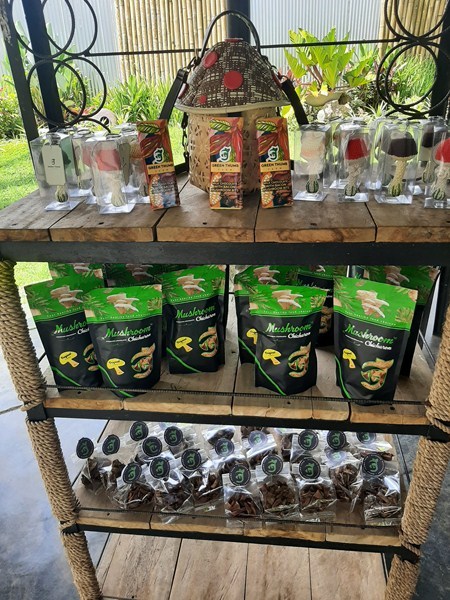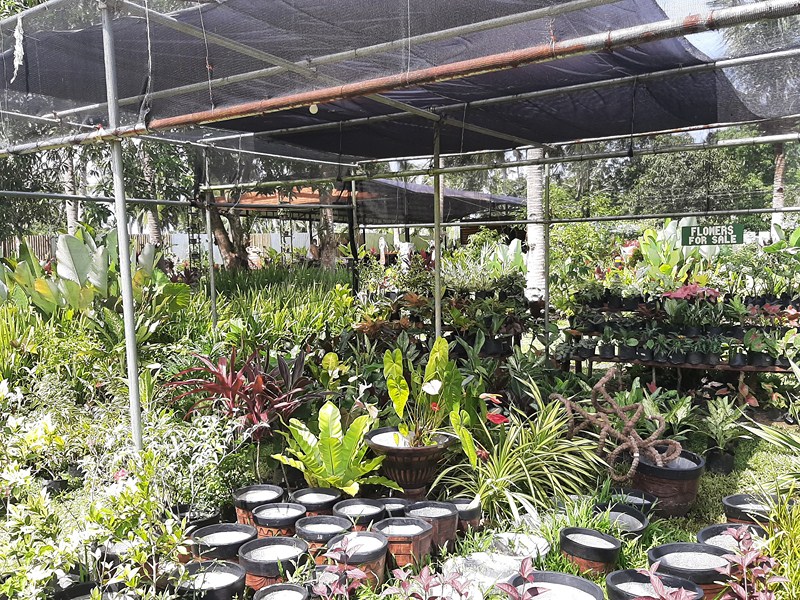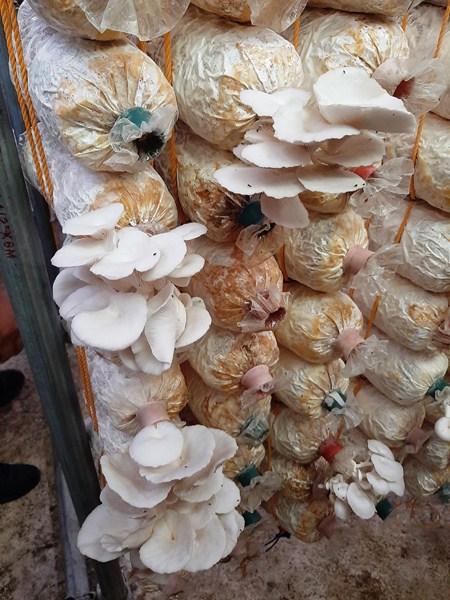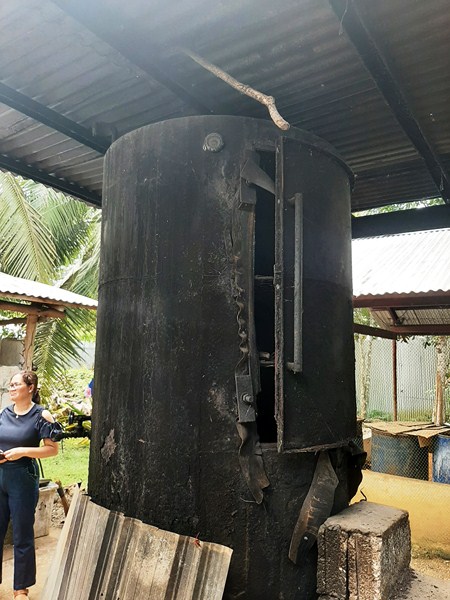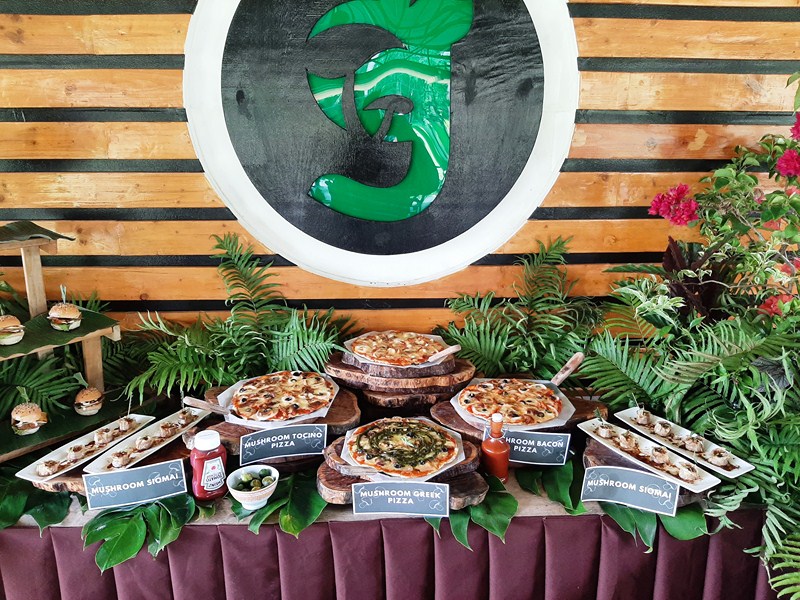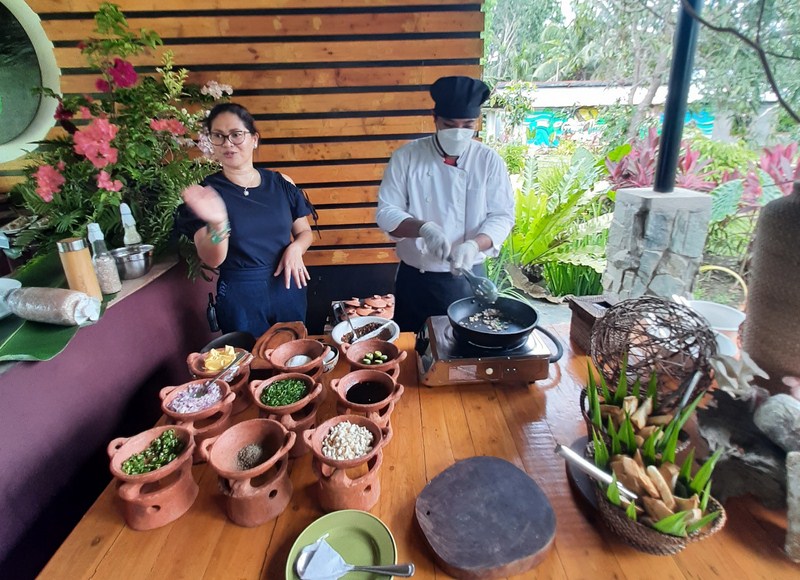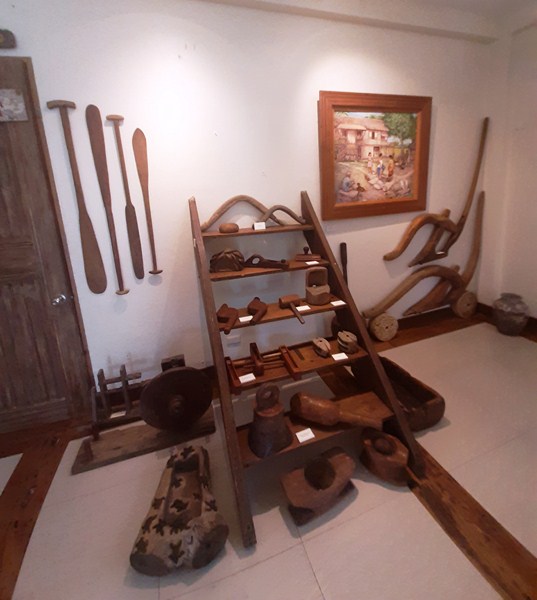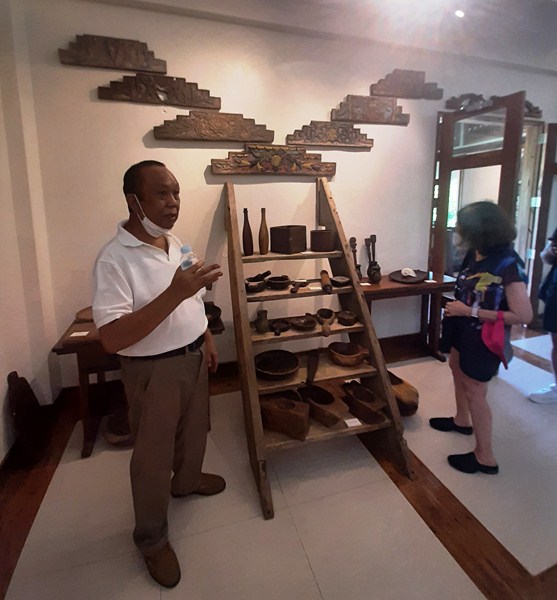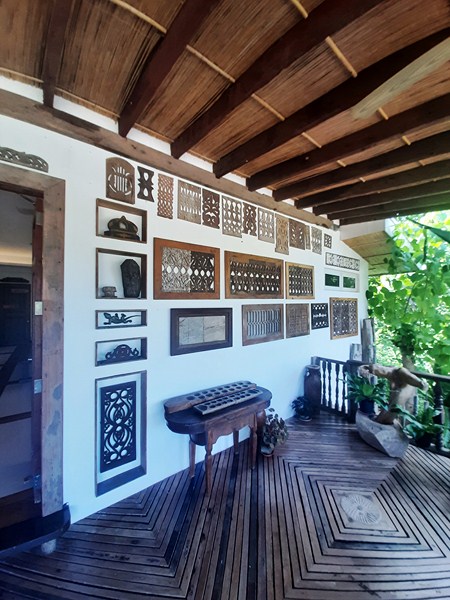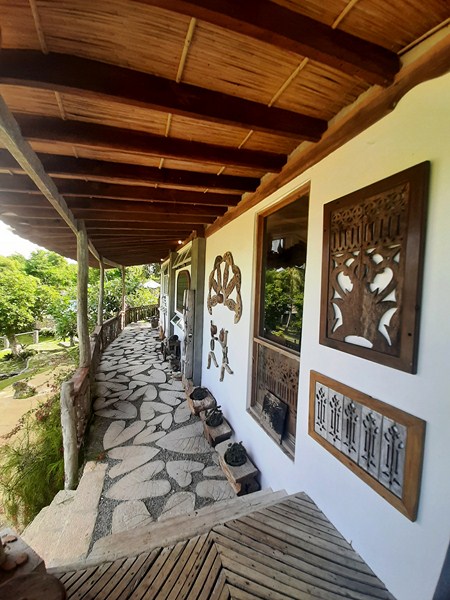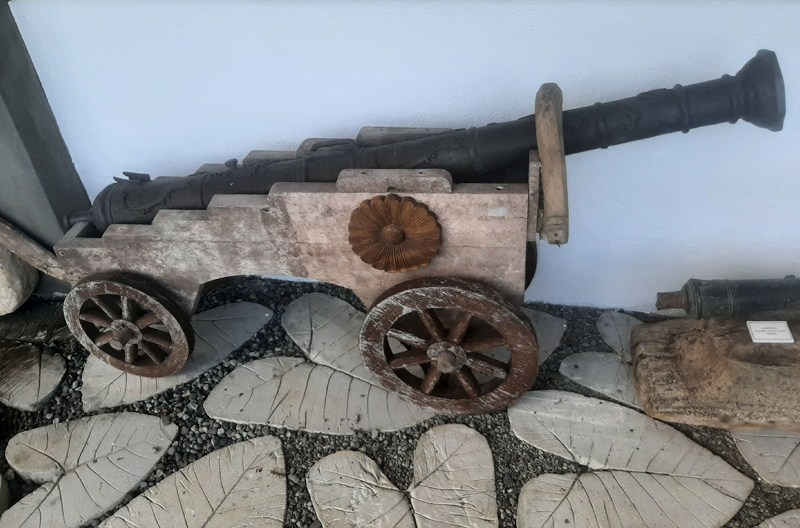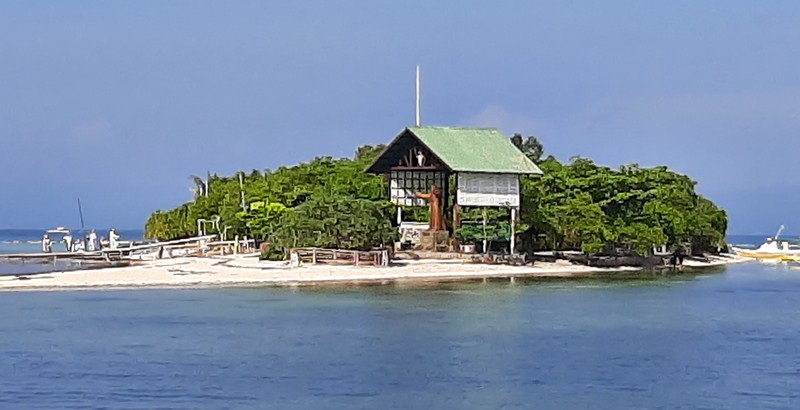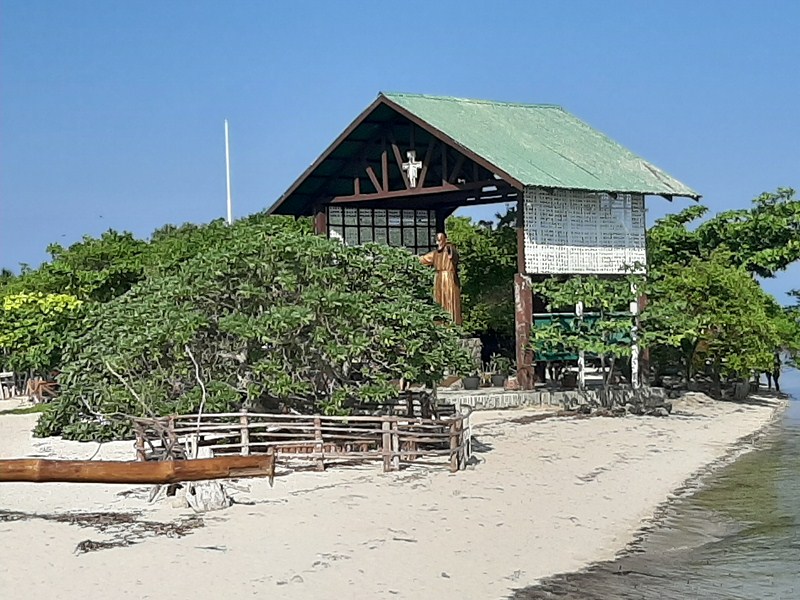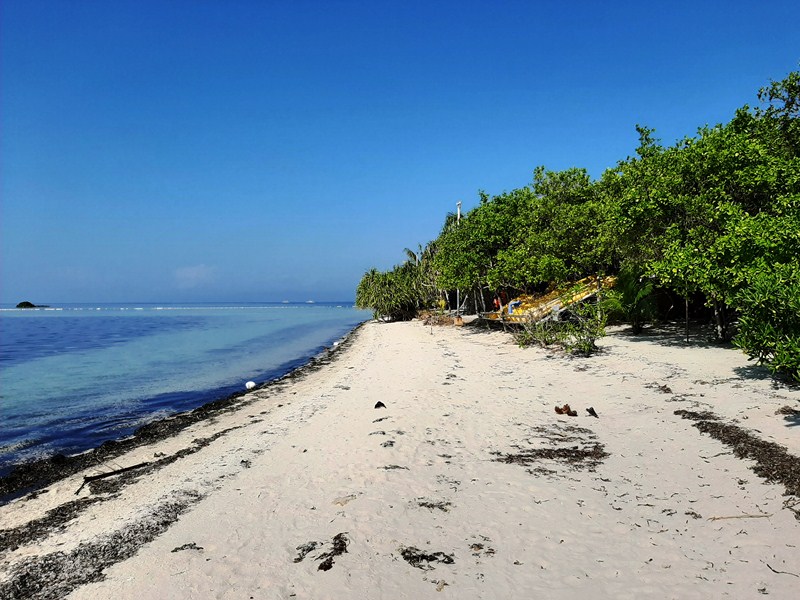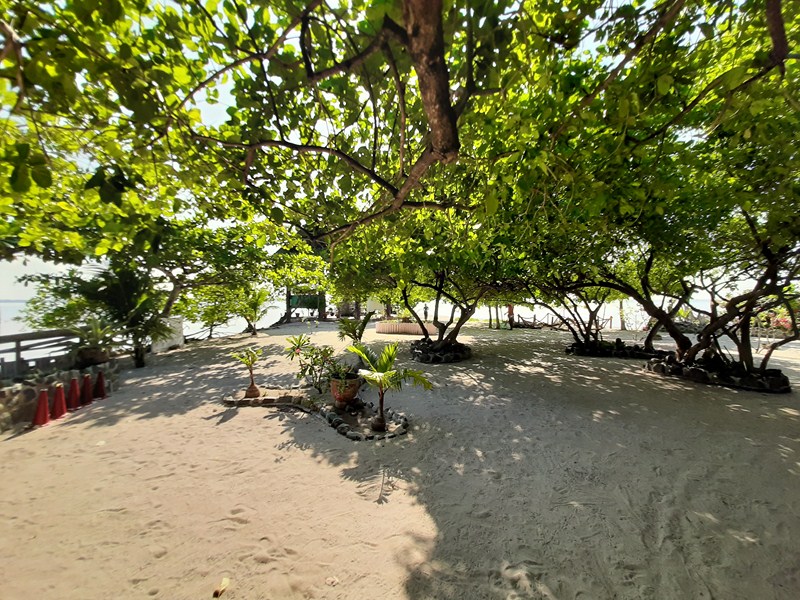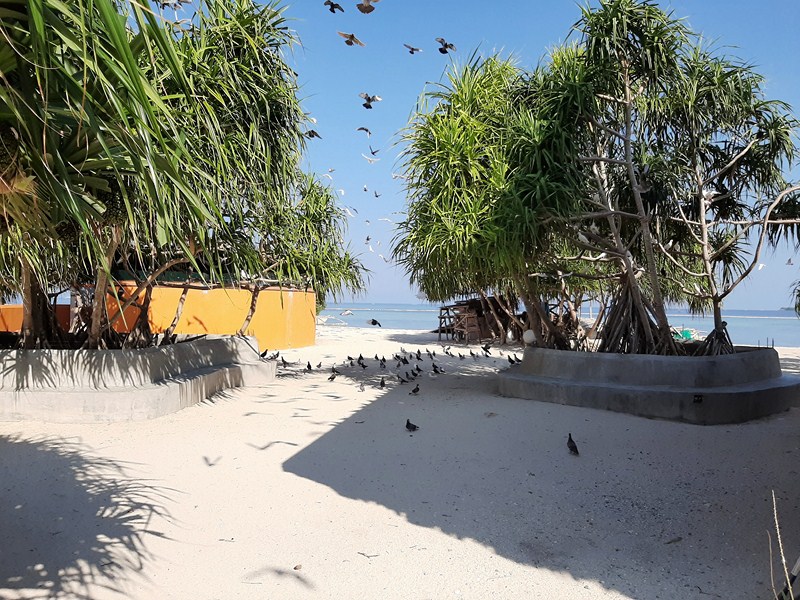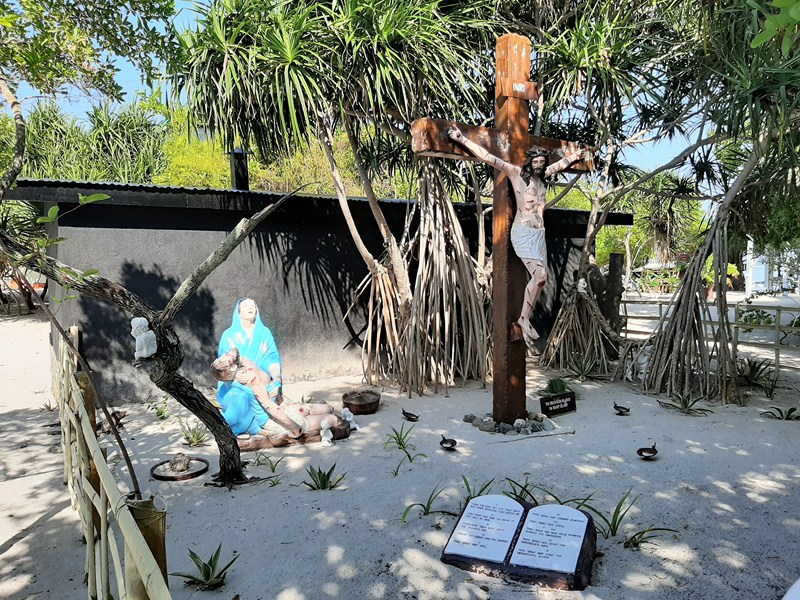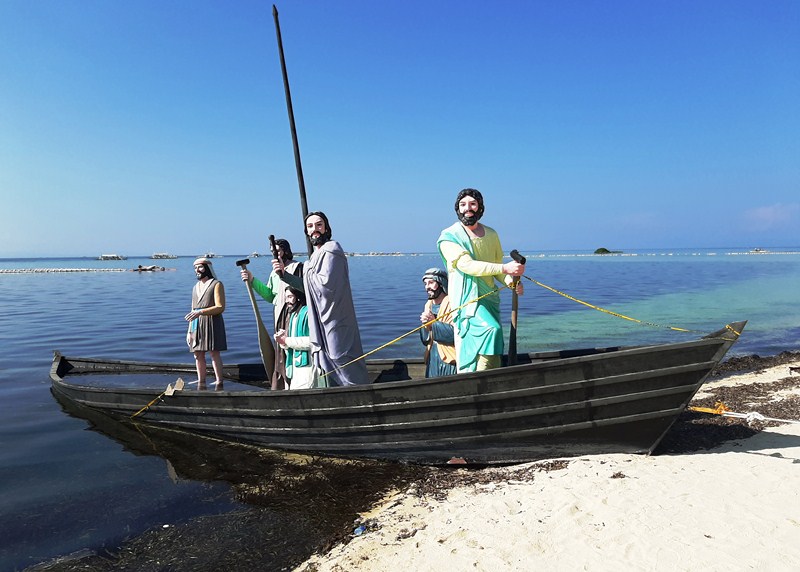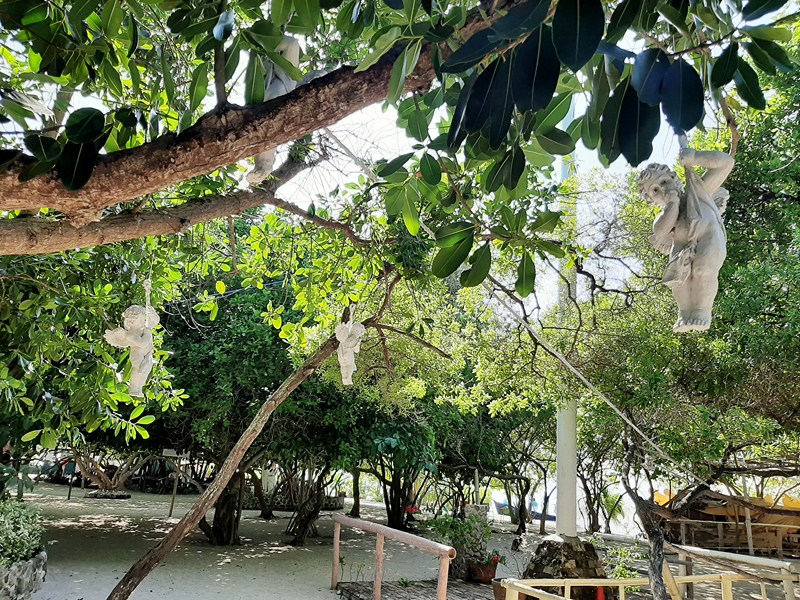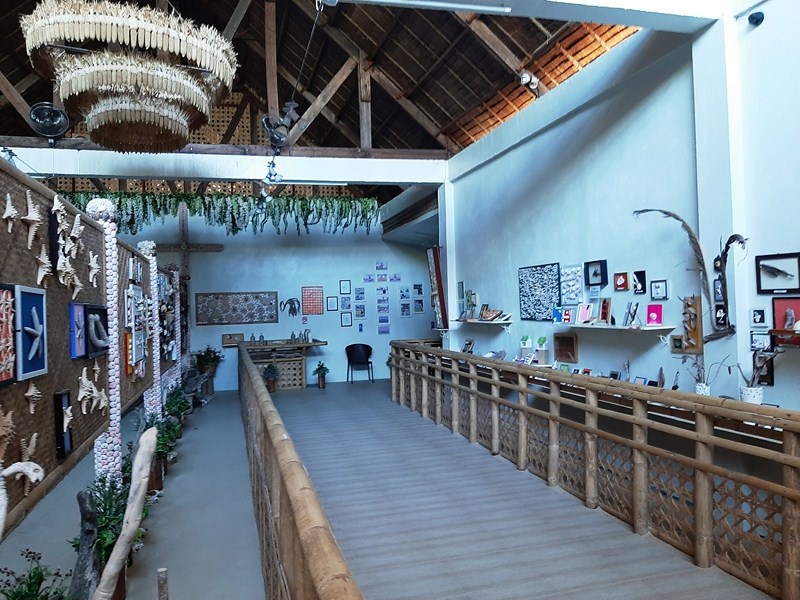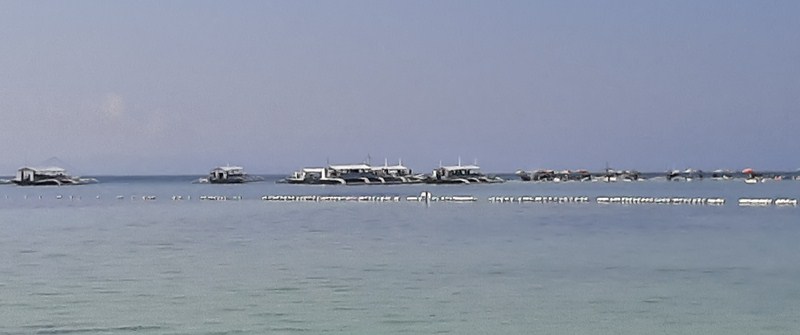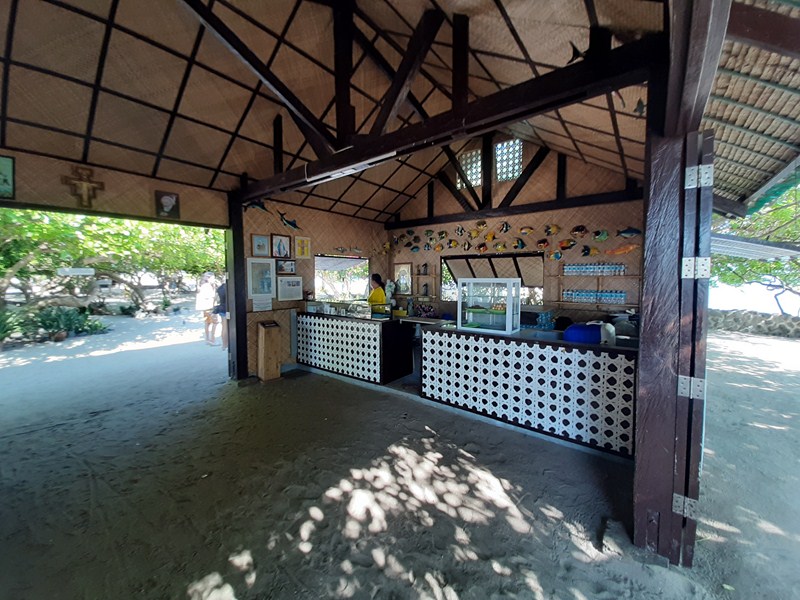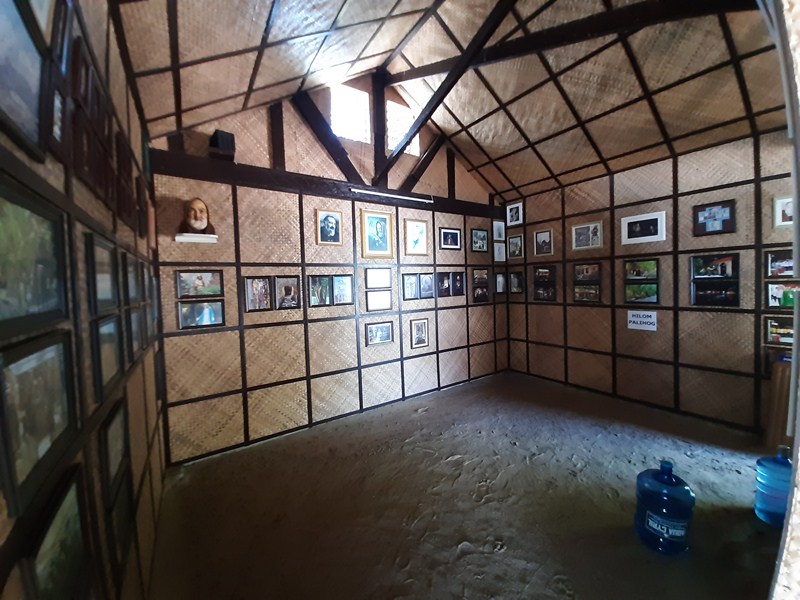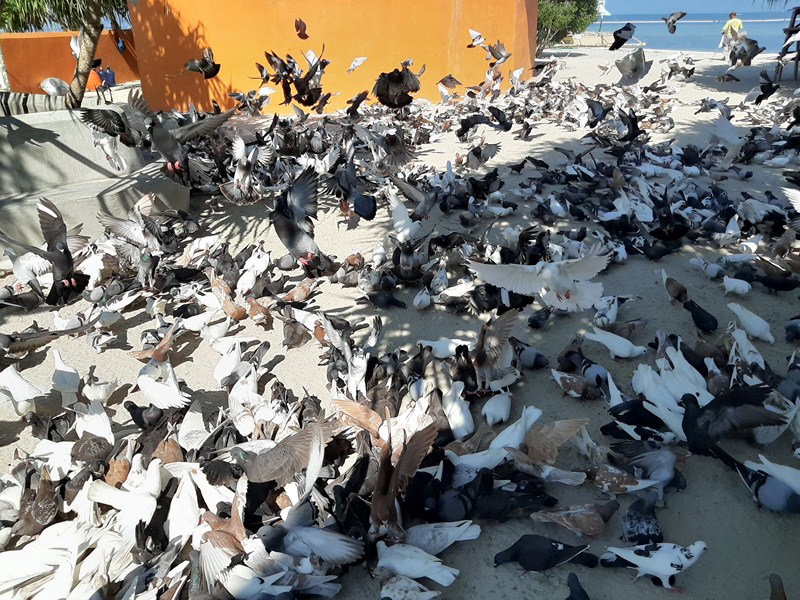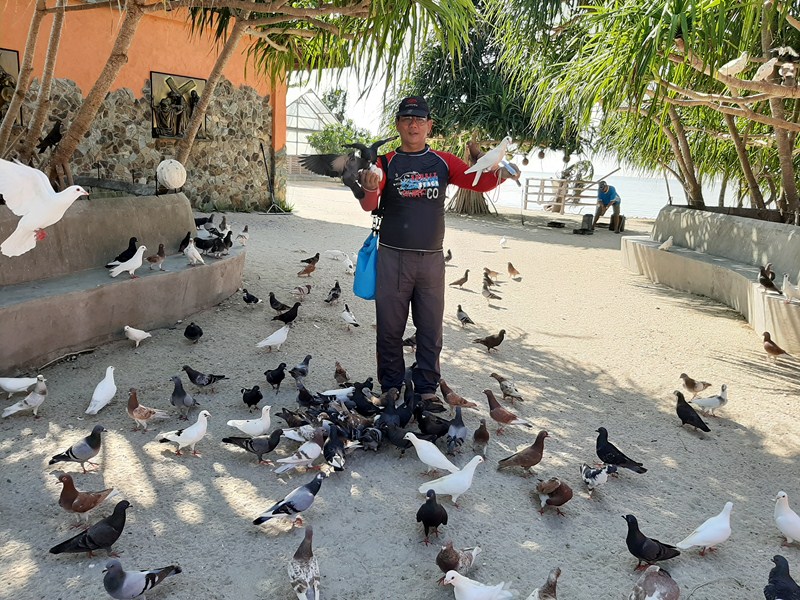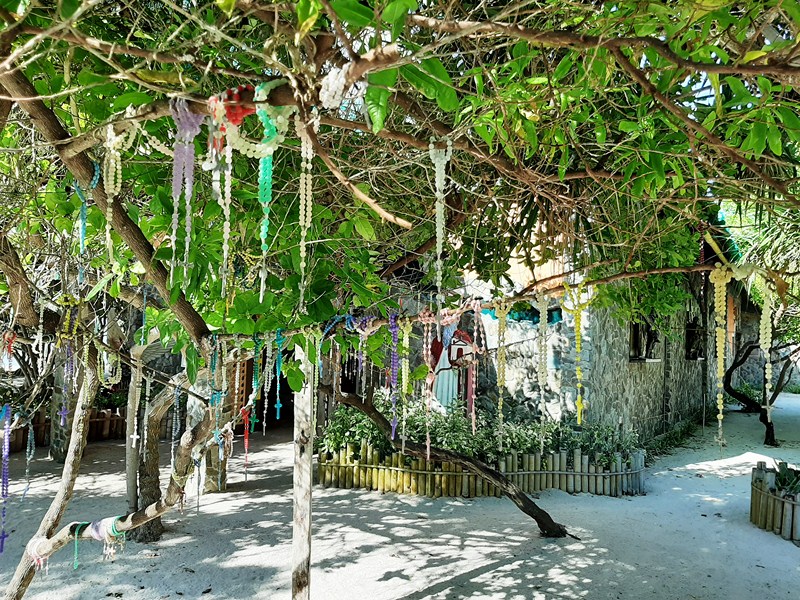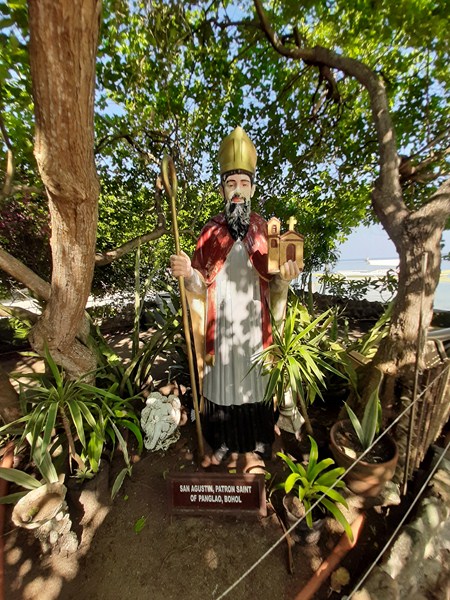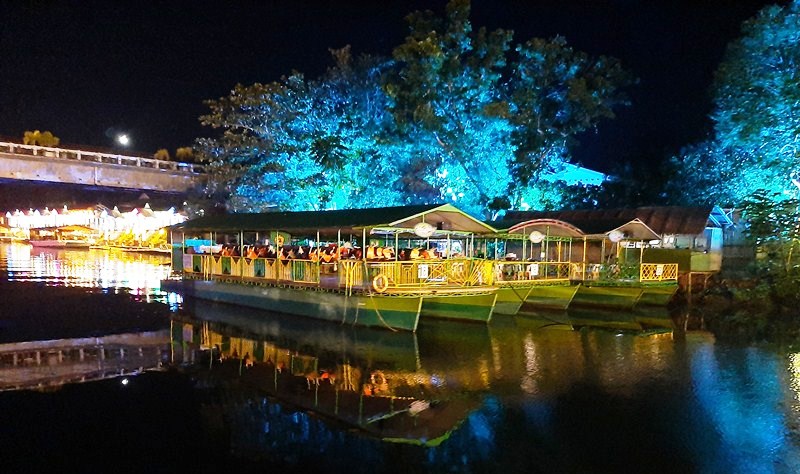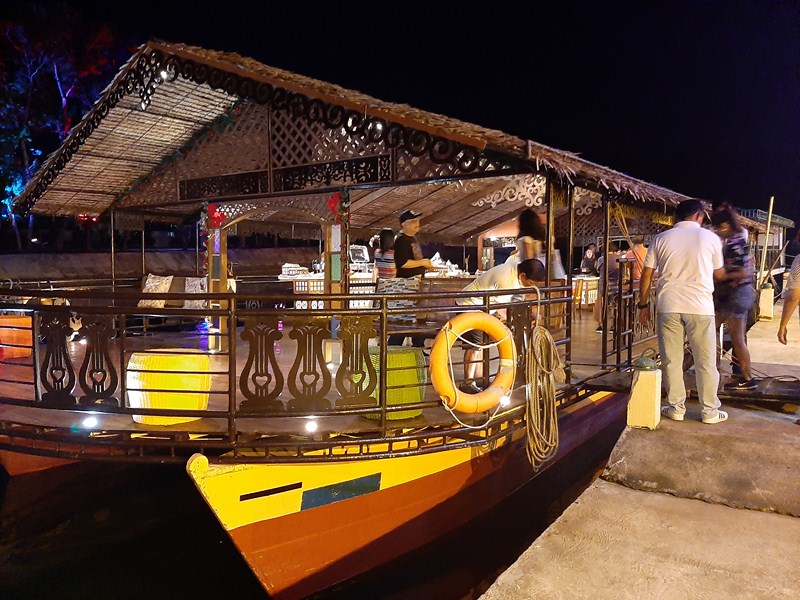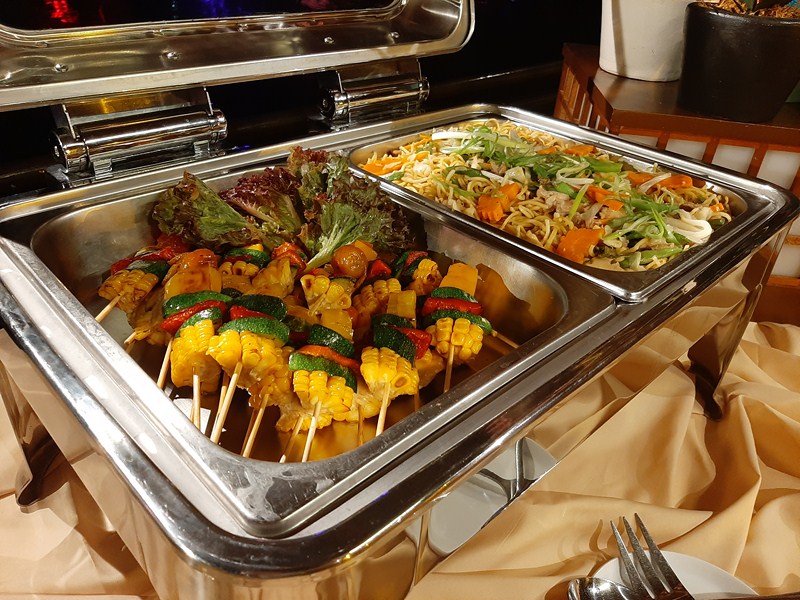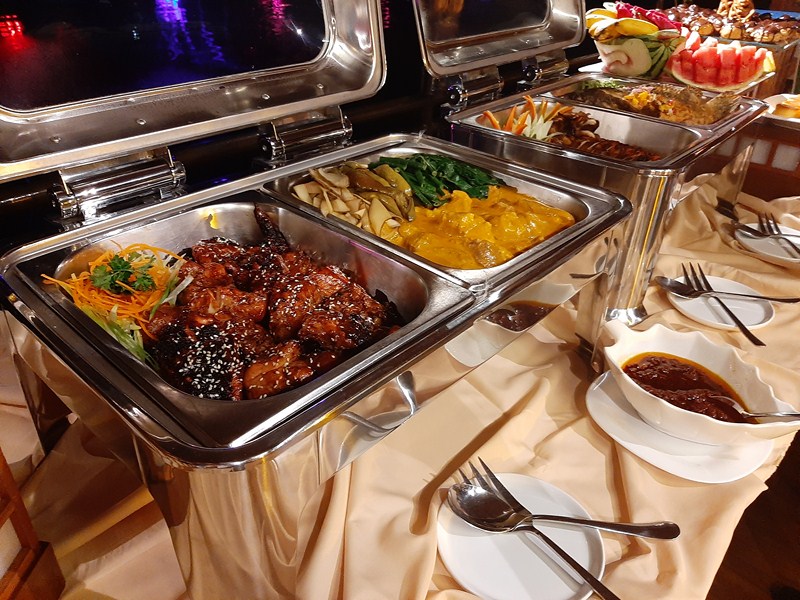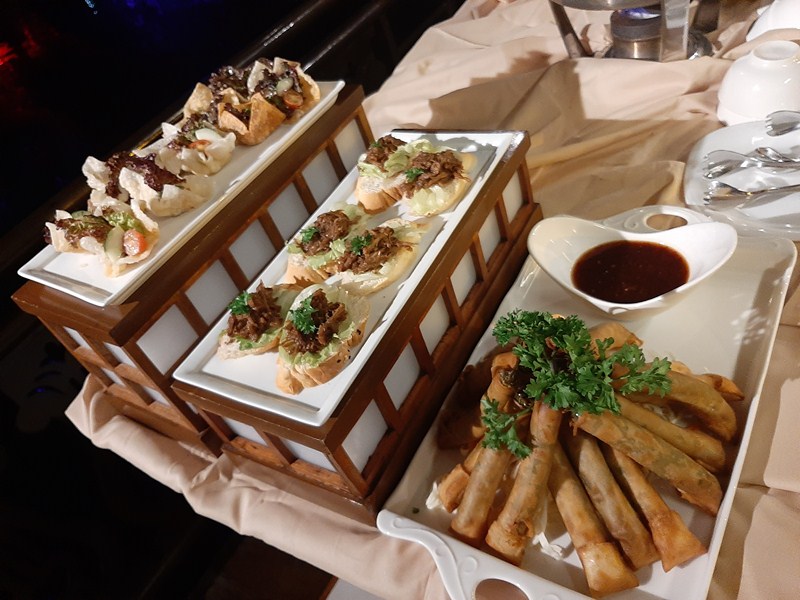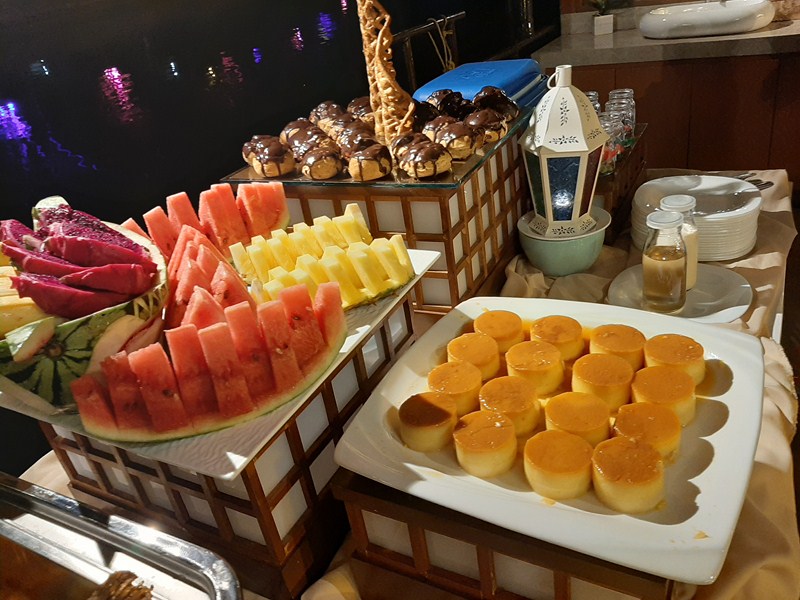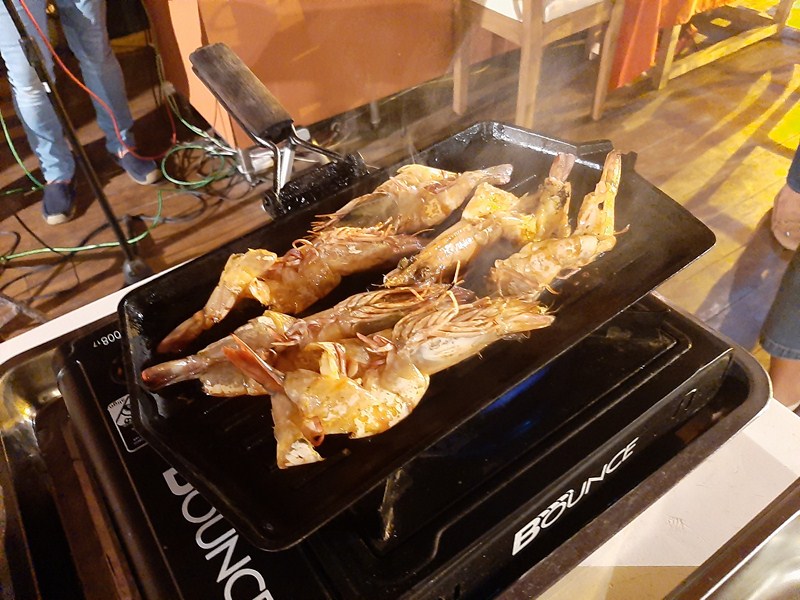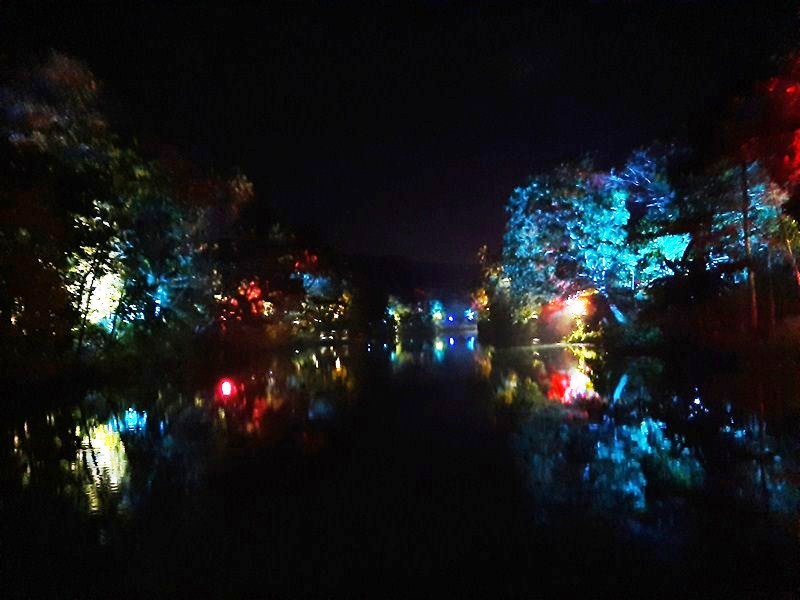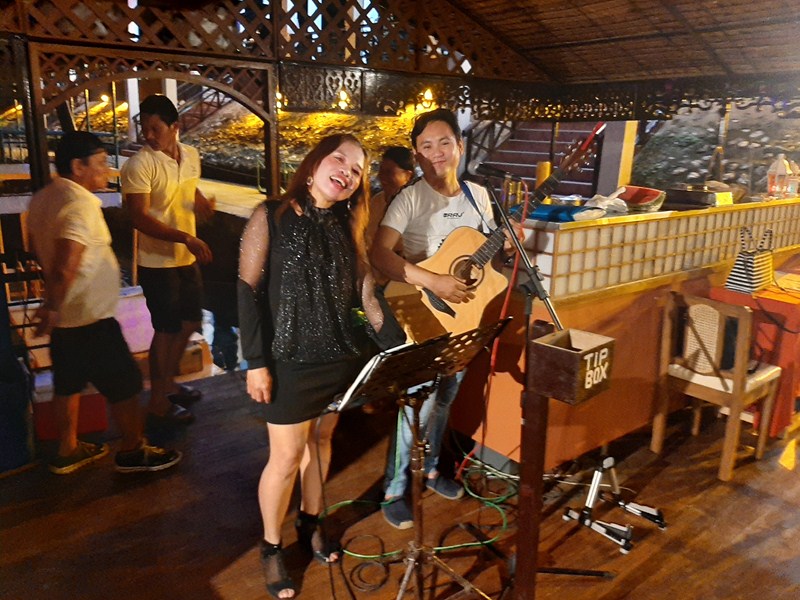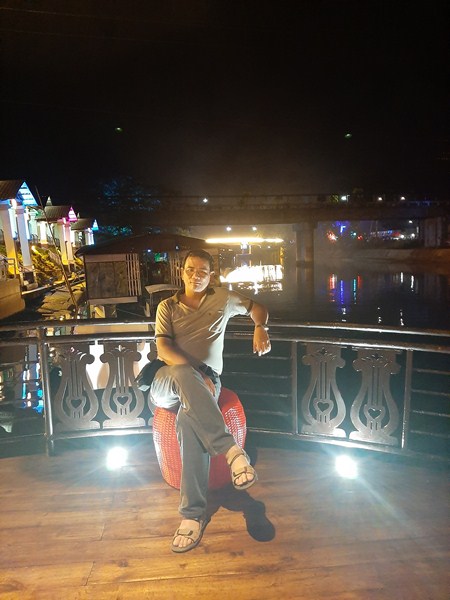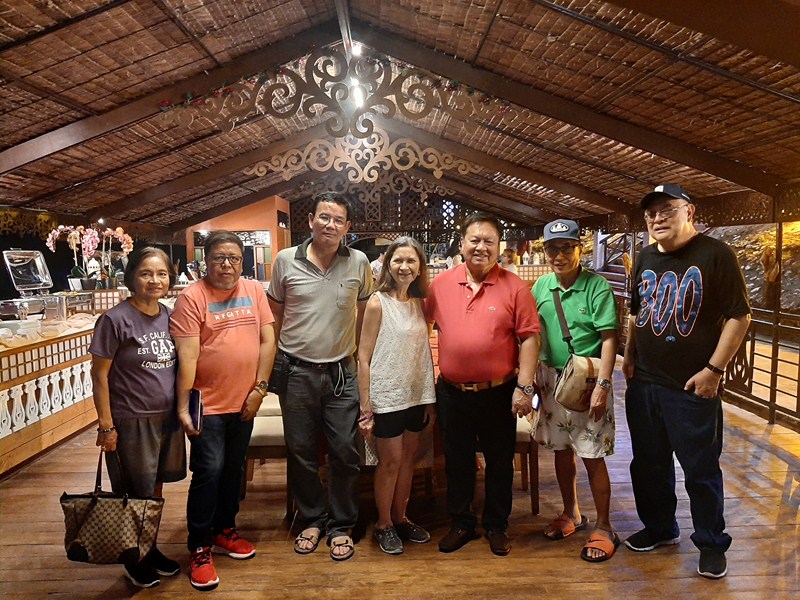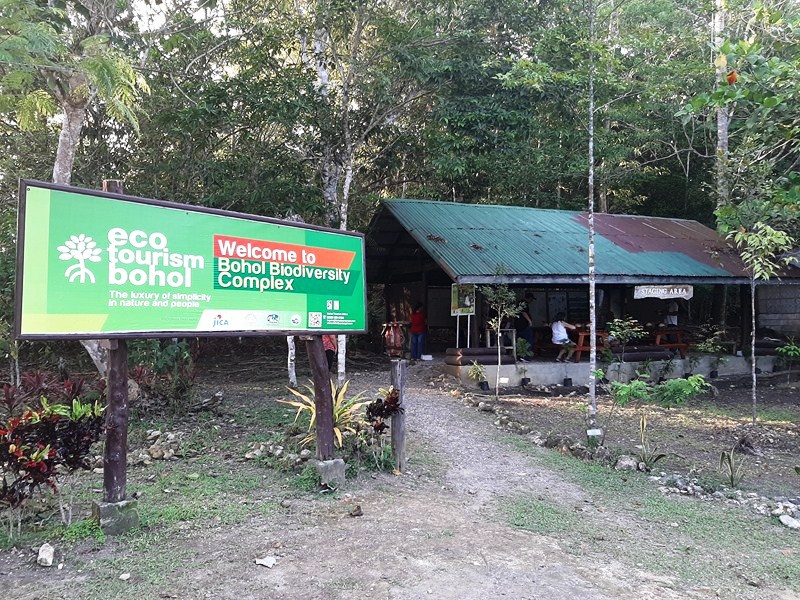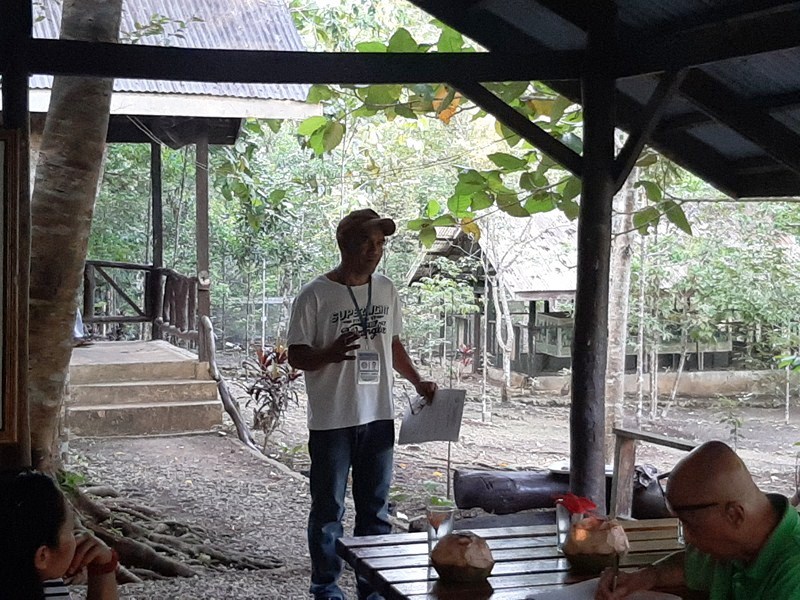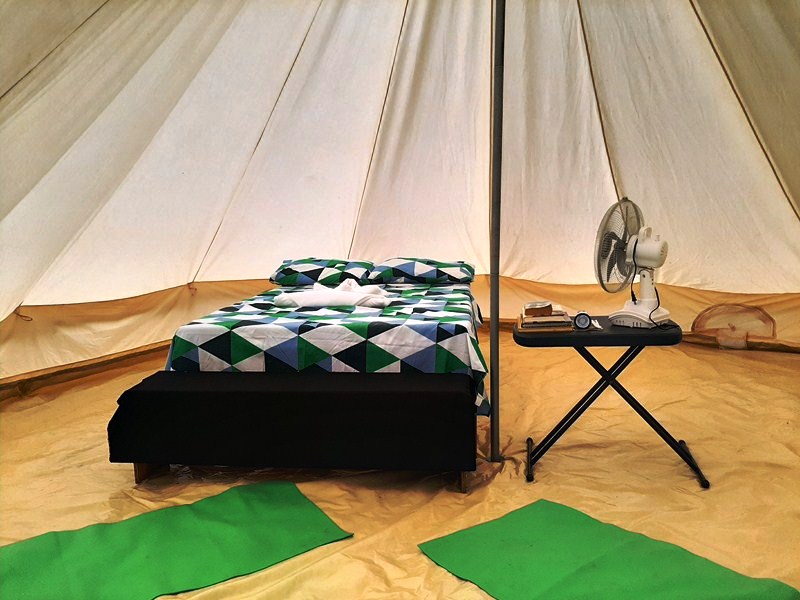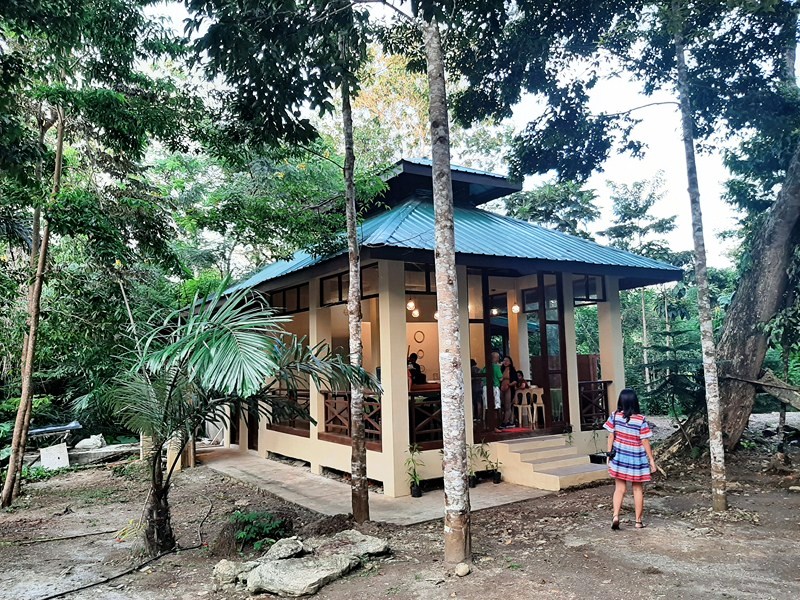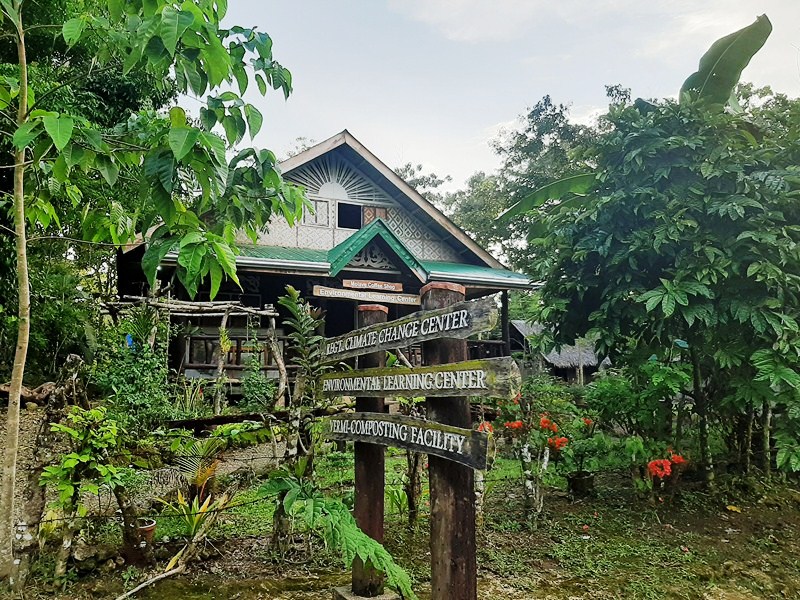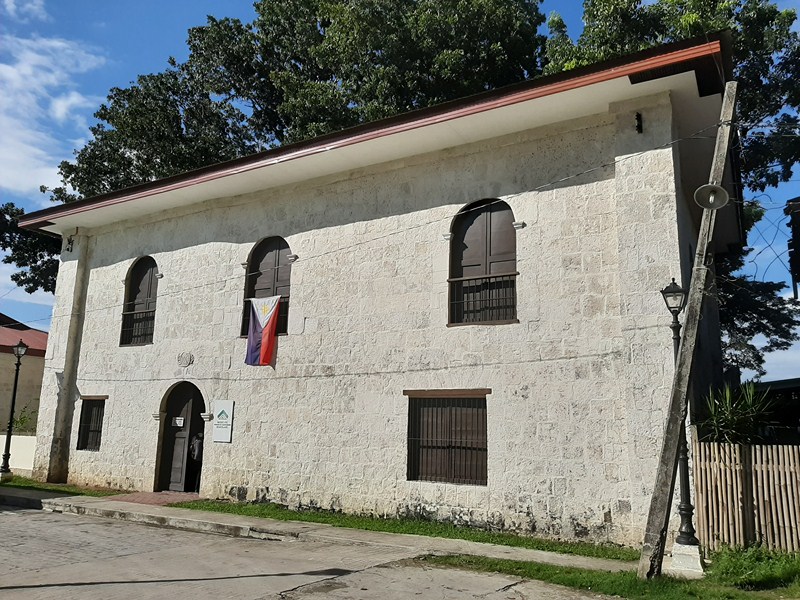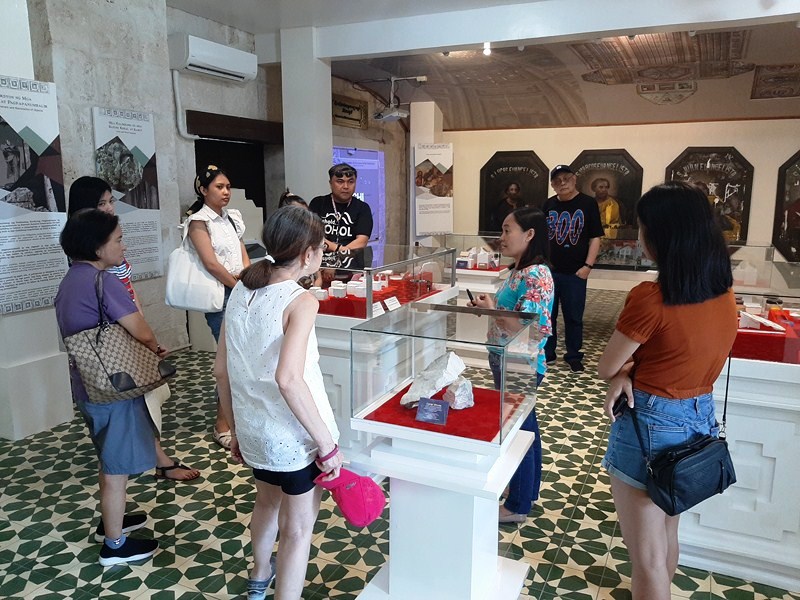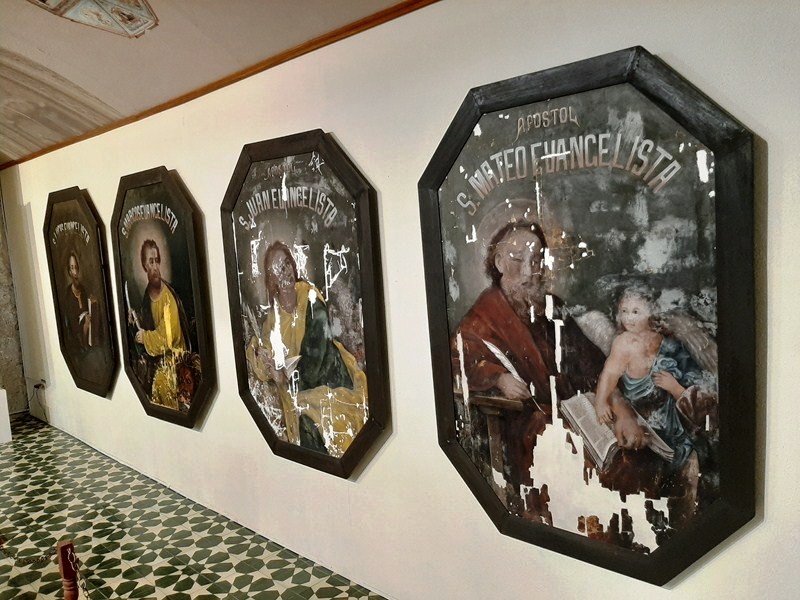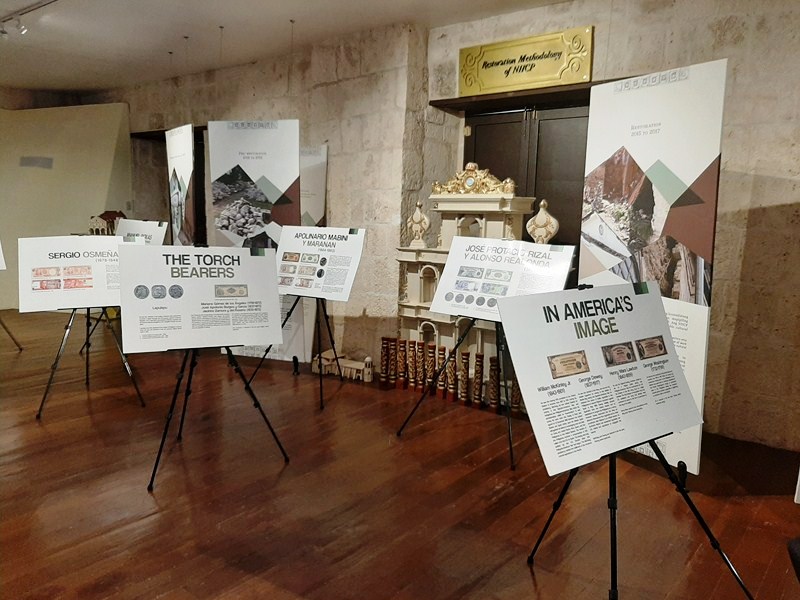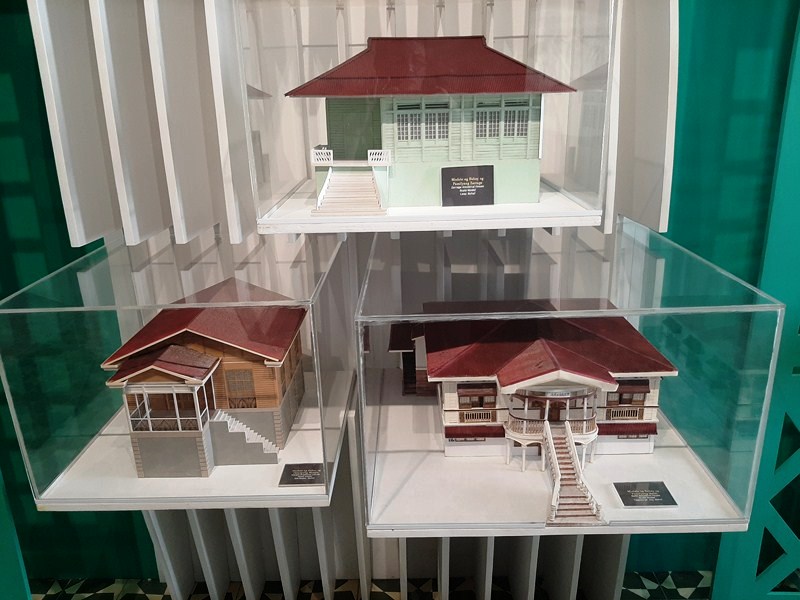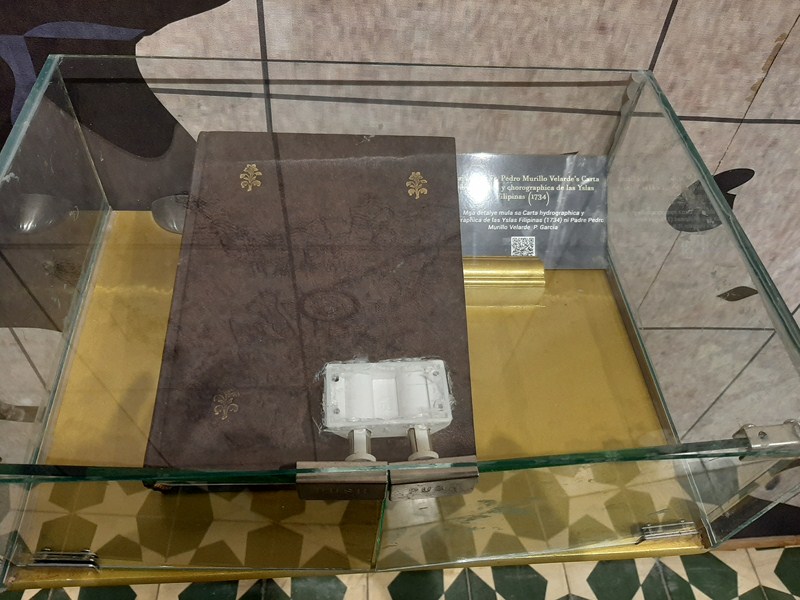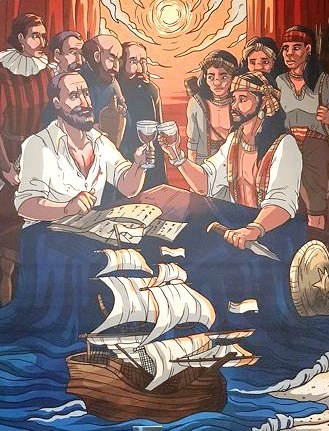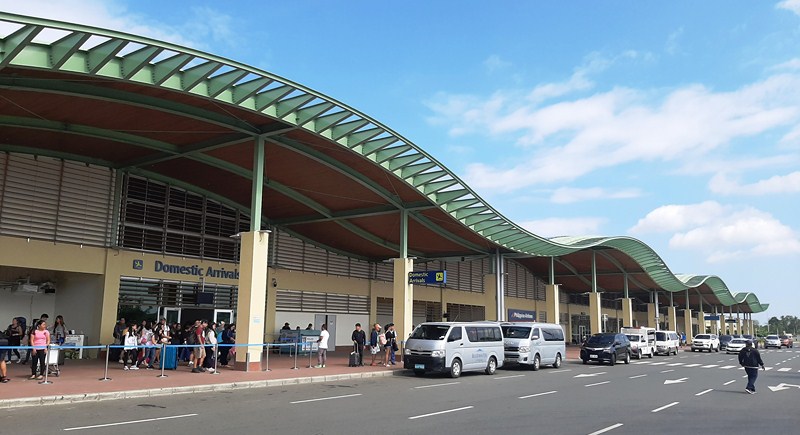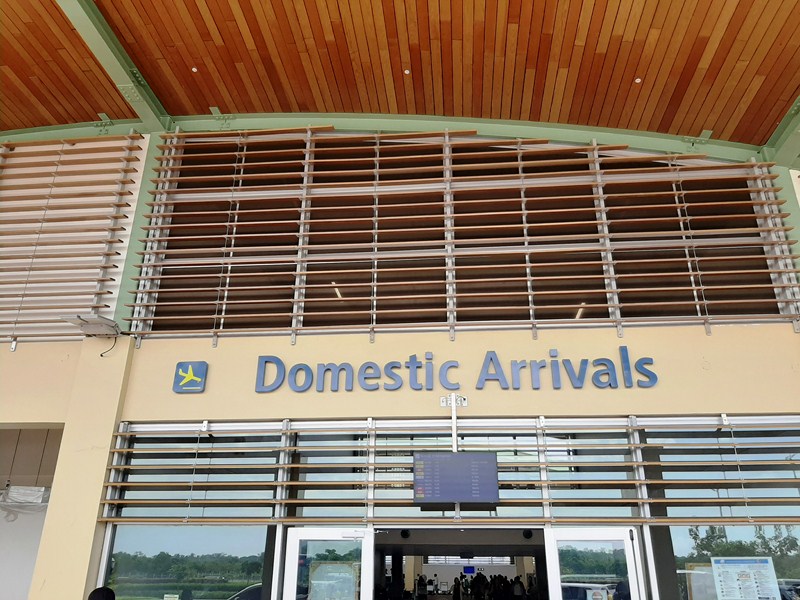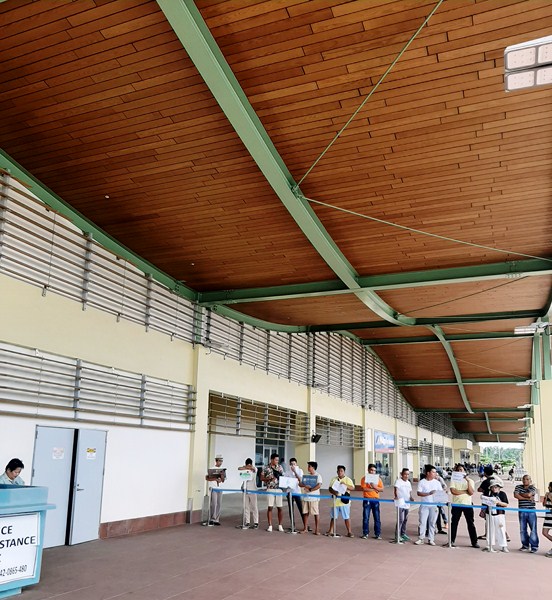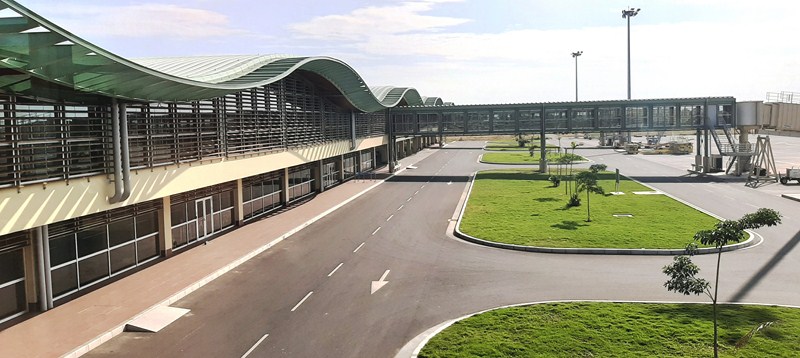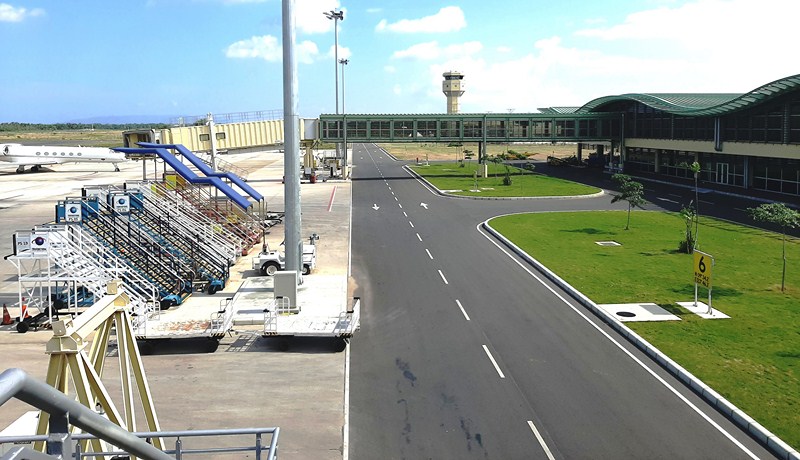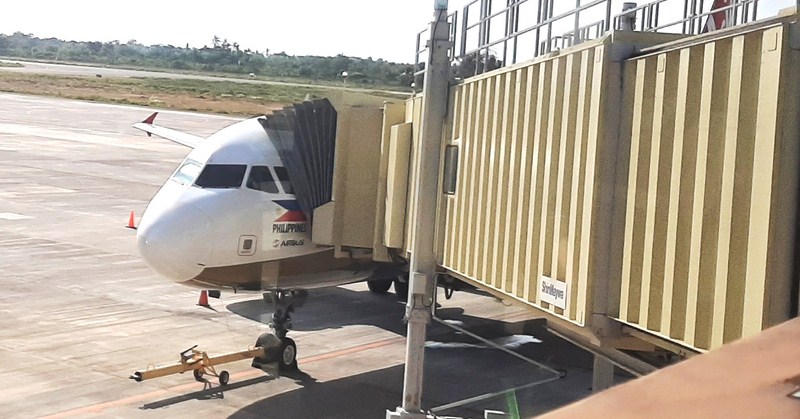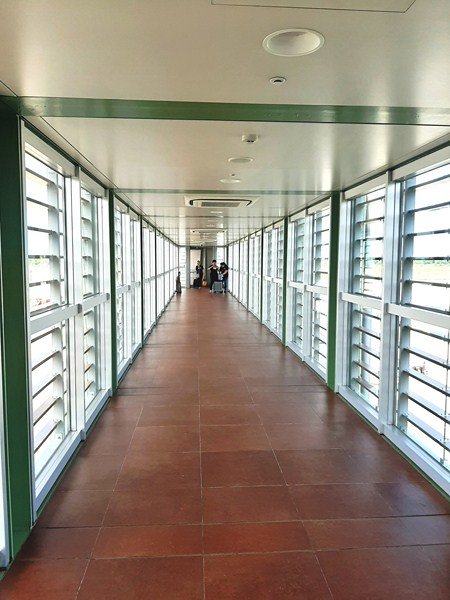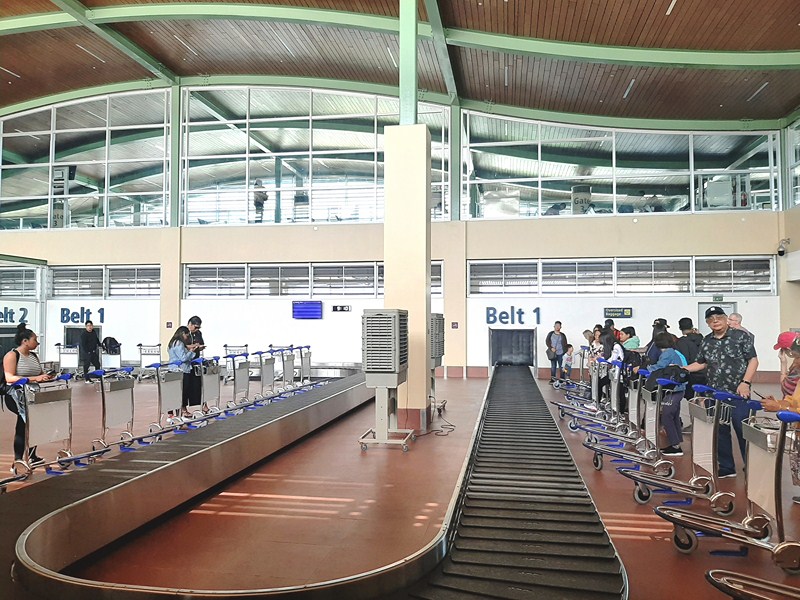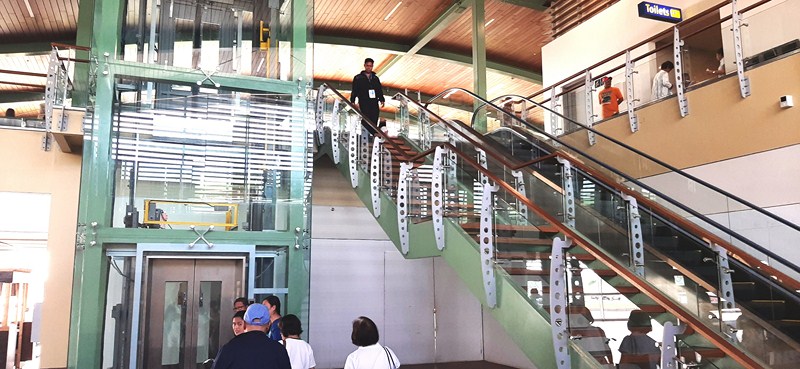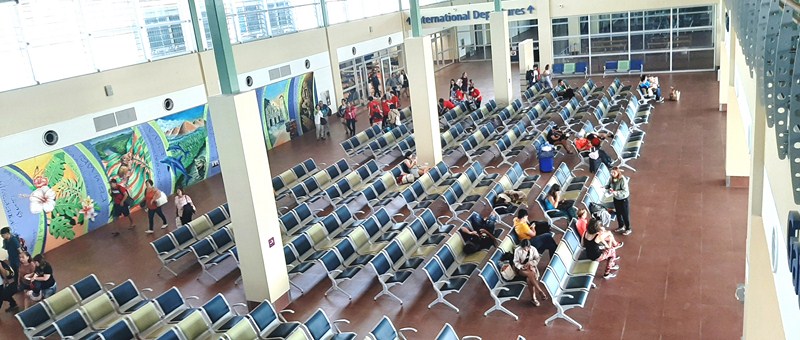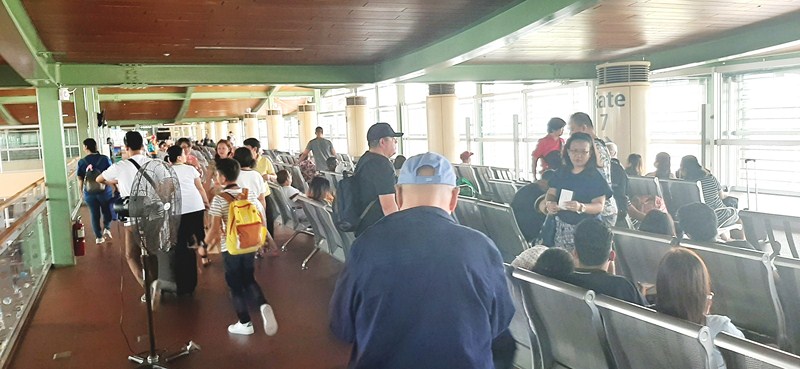Our final stop in our Bohol culinary tour was at Julio’s Bed and Breakfast, a stone’s throw away from an exquisite shoreline, pristine waters and calming sunset view of Loay Bay.
Upon arrival, we were welcomed by its eponymous proprietor, Mr. Pio Araneta and his wife Dra. Grace. The restaurant here is the highlight of our visit.
At the restaurant’s kitchen, we first experienced how the popular siakoy (also spelled as syakoy, siyakoy and shakoy) snack, also known as lubid-lubid (“little rope”), was made.
This long, braided, soft, puffy and airy pastry, with a similar taste to the sugary doughnuts sold on streetside bakeries, is traditionally made with flour, sugar, salt, and yeast and deep-fried and then sprinkled with white sugar.
It was best paired with tableya sikwate, native hot chocolate made using the traditional batirol (wooden whisk), and latik (coconut caramel).
Pio then demonstrated how generations of locals in the area prepared nilubihang or ginataang kagang (land crab with niyog), an heirloom recipe which incorporated the fat of native land crabs (kagang) with fresh coconut meat and water plus herbs, vegetables and spices.
While waiting for the kagang to cook, Ms. Lily Busano (president of the Albur Calamay Makers Association) showed us how kalamay, Bohol’s most popular pasalubong, was prepared and cooked.
This sticky, sweet delicacy is made with grated coconut, coconut milk, brown sugar, muscovado sugar, peanuts and pilit (ground glutinous rice).
To create the smooth, sticky consistency, the thick sugary mix was stirred continuously in a giant wok for up to 8 hours. Upon cooling, the kalamay is then transferred, preserved and sold in a type of packaging is known as kalamay-hati, inside signature halved smooth mesocarp of coconuts, locally known as bagul or paya which are then sealed shut with a characteristic red papel de japon (crepe paper).
It can be eaten on its own or turned into a spread for bread or siakoy. The sikwate, siakoy and kalamay are perfect for breakfast, merienda and dessert.
Before we ate the nilubihang kagang, Pio checked out the pasgong, traditional handmade bamboo traps used for catching kagang. The mouths of the traps were previously poised outside the crab holes and left overnight.
Sure enough, two of the traps we observed had crabs caught inside them. There’s no need for bait for this quick and efficient process but each trap could fit only one crab.
While waiting, cocktails were also served. Others also tried their hand in weaving a pouch of palm leaves for puso or tamu (hanging rice). Soon, the nilubihang kagang was done and this was eaten with puso and pork barbecue. Dessert consisted of turon (banana spring rolls).
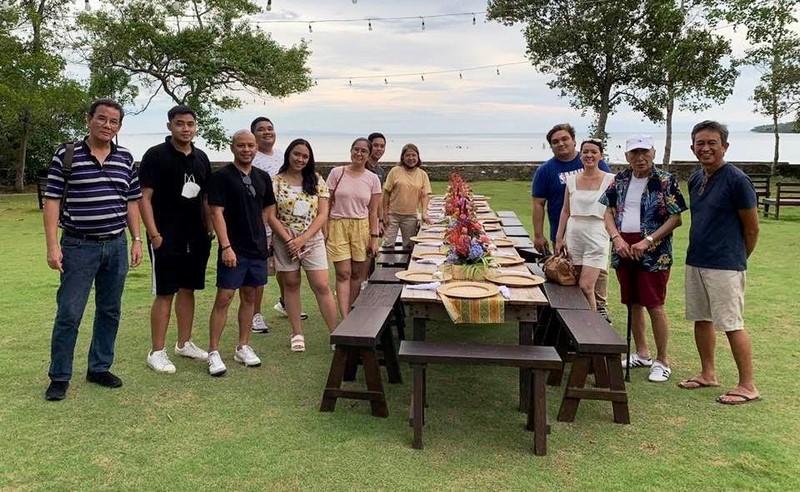
Media group (L-R): the author, Mr. John Paul Dacuycuy, Mr. Nickie Wang (Entertainment and Lifestyle Editor, Manila Standard), Mr. Anton Delos Reyes (Writer, Malaya Business Insight). Ms. Raye Sanchez (Lifestyle and Entertainment Writer, Daily Tribune), Ms. Christine Alpad (Senior Reporter, Manila Times Lifestyle and Entertainment Desk), Mr. Alvin Alcantara (www.thediarist.ph), Ms. Lourdes Sultan (Travel Village Tours and Travel), Mr. Mario Alvaro Limos (Features Editor, Esquire Philippines), Ms. Roxanne M. Gochuico (Corporate Social Responsibility Manager, Cebu Pacific), Mr. Pete Dacuycuy (Publicist) and Mr. Pio Araneta
Julio’s Bead and Breakfast: Del Carmen St., Villalimpia 303, Loay. Mobile number: (0922) 515-7594.
Bohol Provincial Tourism Office: G/F, New Provincial Capitol Bldg., C. Marapao St, Tagbilaran City, 6300. Tel: (038) 411 3666. Email: inquire@boholtourismph.com. Website: www.bohol.ph.
Department of Tourism Regional Office VII: G/F, L.D.M Building, Legaspi St, Cebu City, 6000 Cebu. Tel: (032) 254 6650 and(032) 254 2811. E-mail: dotregion7@gmail.com. Website: dot7@tourism.gov.ph.
Bluewater Panglao Resort: Bluewater Rd, Sitio Daurong, Brgy. Danao, Panglao, 6340 Bohol. Tel: (038) 416-0702 and (038) 416-0695 to 96. Fax: (038) 416-0697. Mobile numbers: (0998) 843-0262, (0998) 964-1868 (Ms. Margie Munsayac – VP-Sales and Marketing), (0998) 962-8277 (Ms. Louee Garcia), (0919) 912-9663 (Mr. Manuel Sandagaon) and (0908) 890-9013 (Ms. Kate Biol). Email: panglao@bluewater.com.ph, resrvations.panglao@bluwater.com.ph, margie.munsayac@bluewater.com.ph, louee.garcia@bluewater.com.ph, manuel.sandagon@bluewater.com.ph and kate.biol@bluwater.com.ph. Website: www.bluewaterpanglao.com.ph. Manila sales office: Rm. 704, Cityland Herrera Tower, Rufino cor. Valera Sts., Salcedo Village, 1227 Makati City, Metro Manila. Tel: (632) 817-5751 and (632) 887-1348. Fax: (632) 893-5391.
Cebu Pacific Air currently flies seven times daily from Manila and thrice weekly from Davao City (every Wednesday, Friday and Sunday) to Bohol’s Panglao International Airport. Visist www.cebupacificair.com to learn about their latest offerings, safety protocols and travel reminders.

